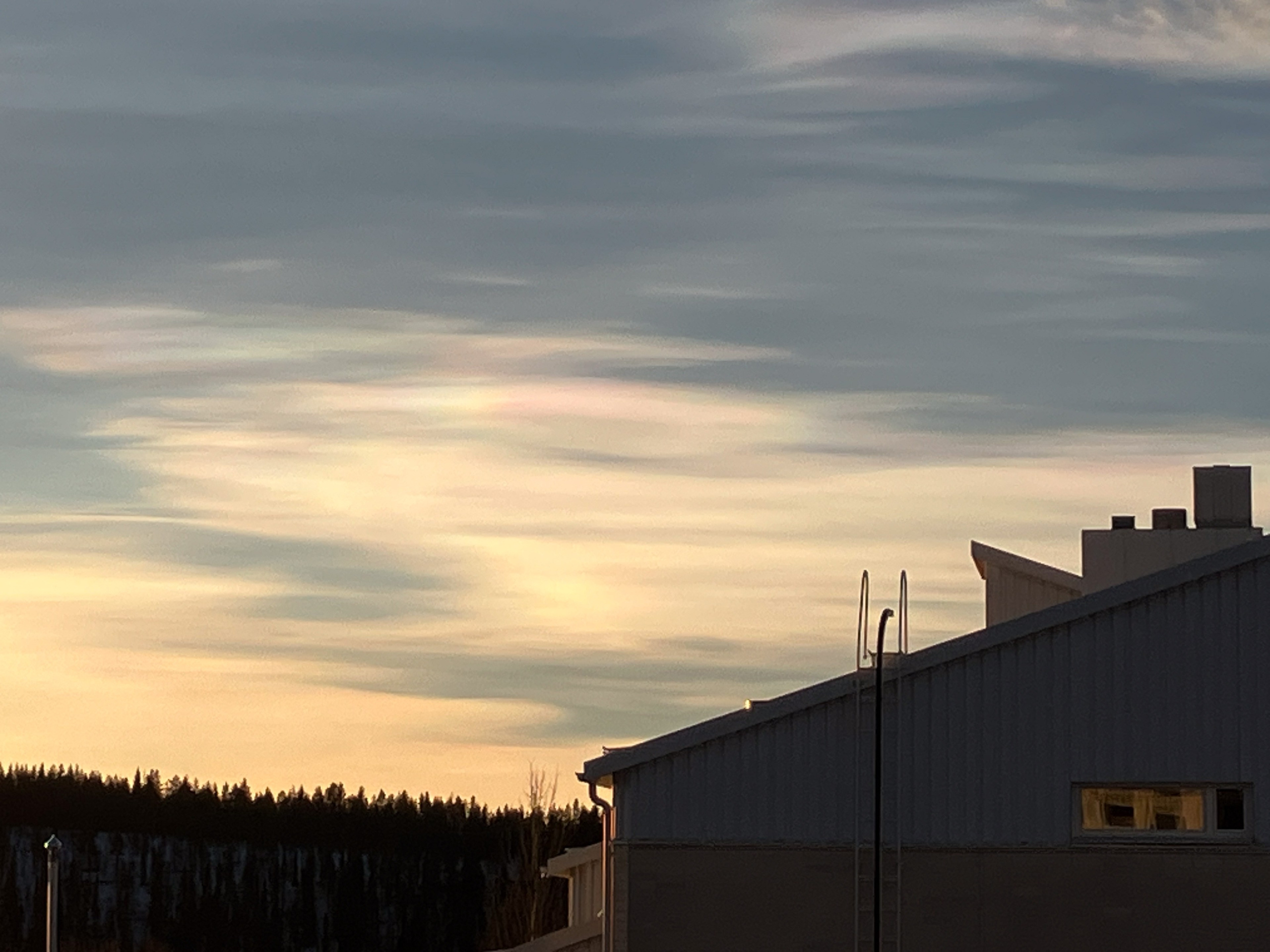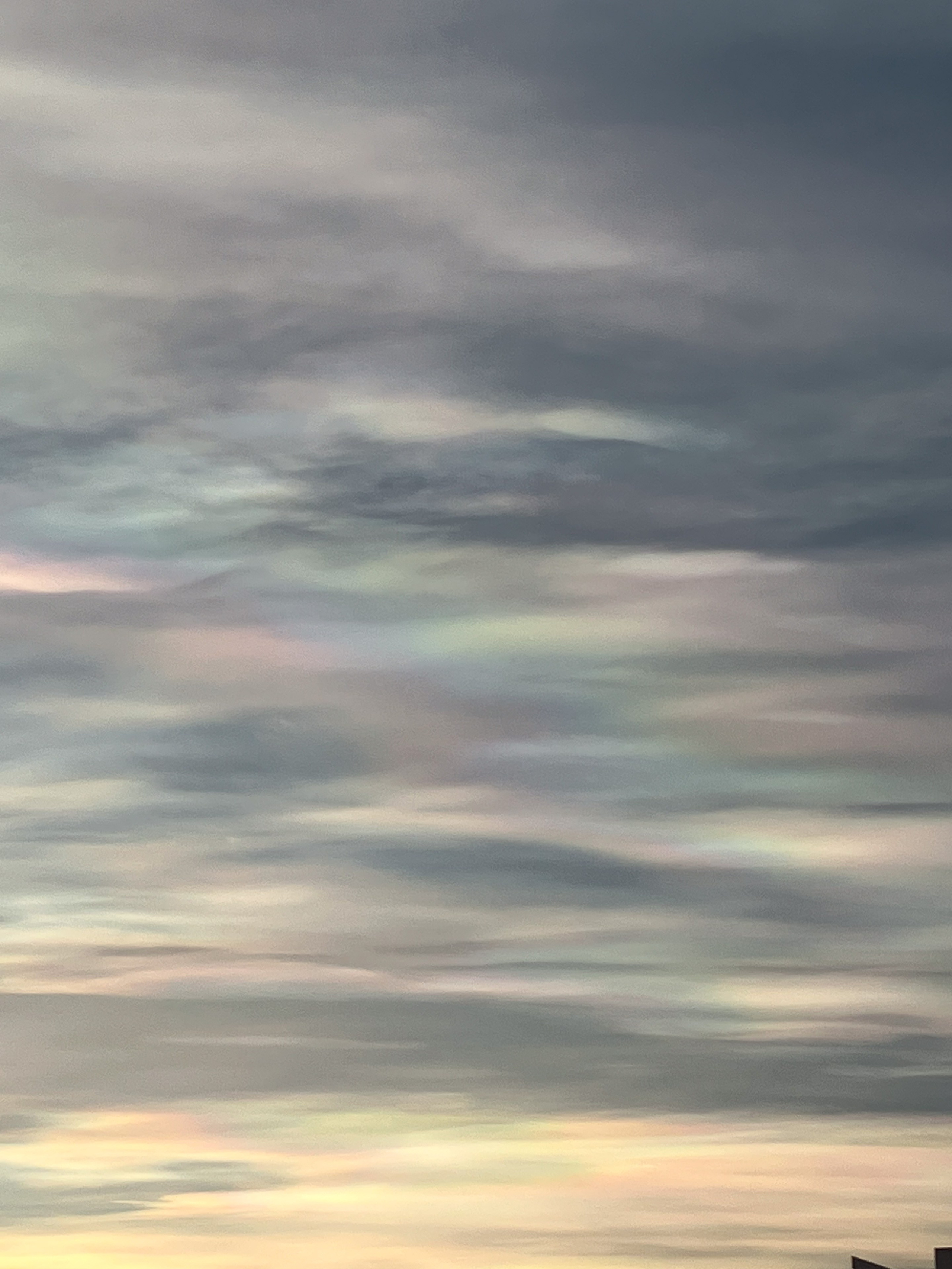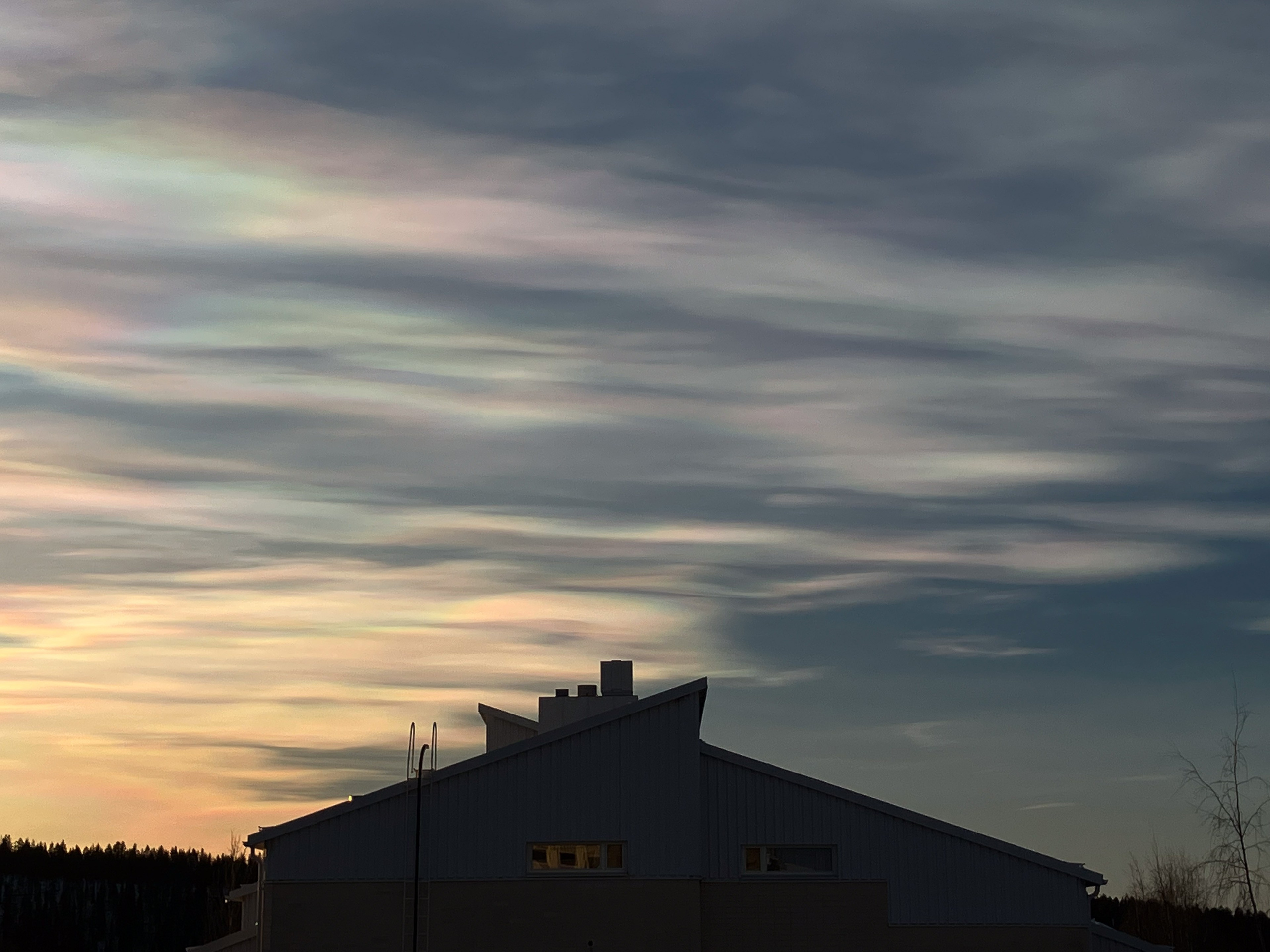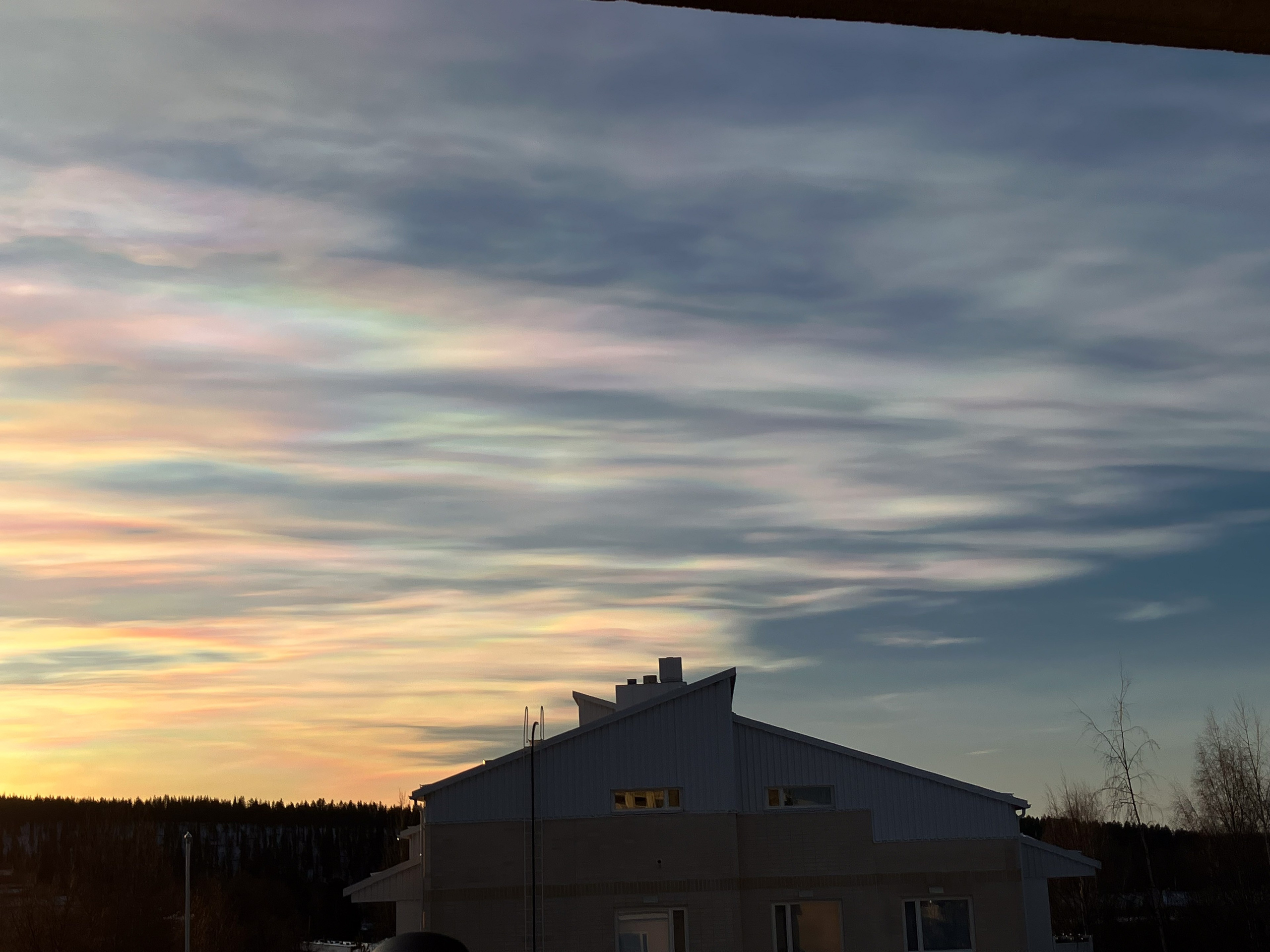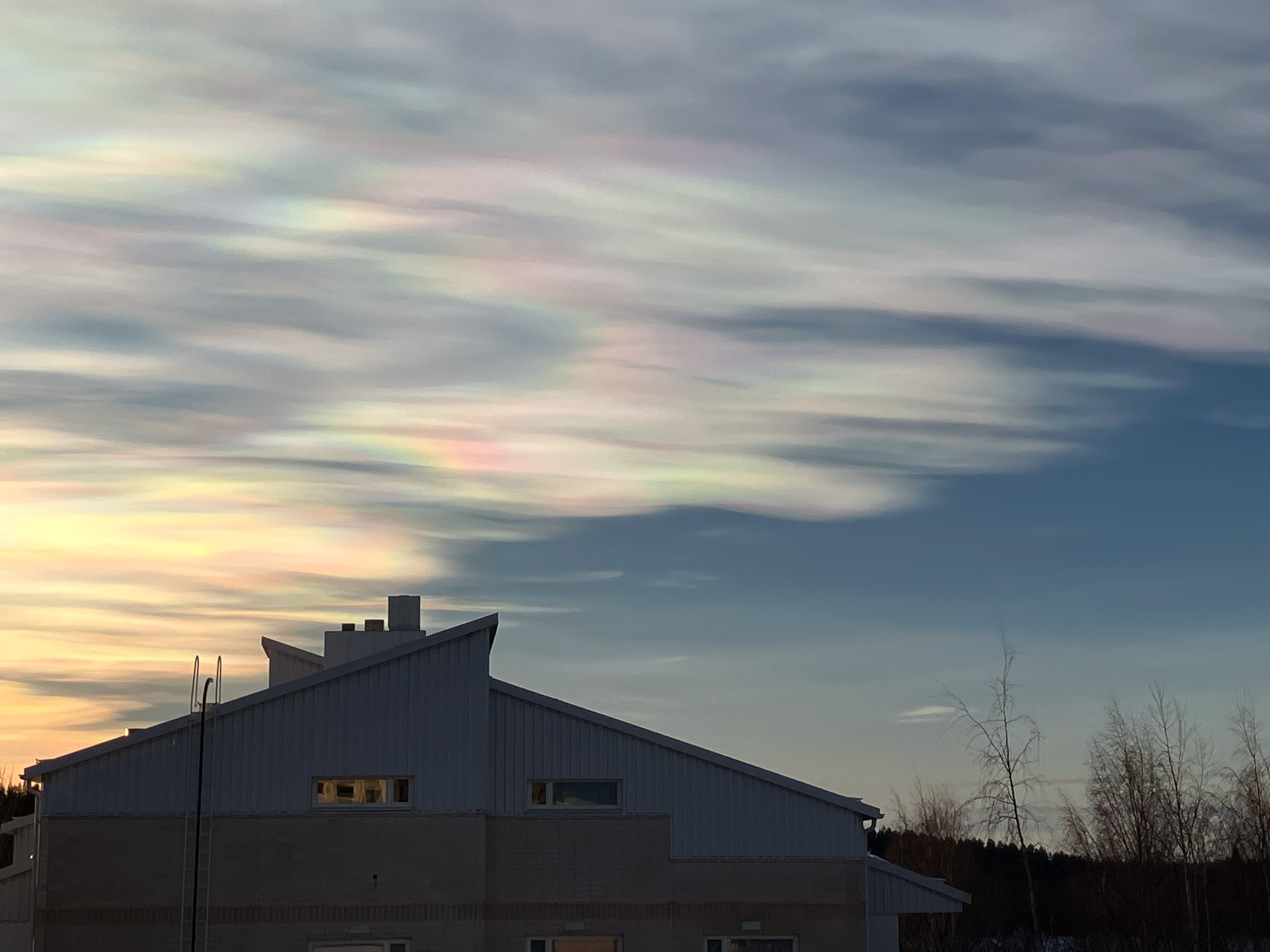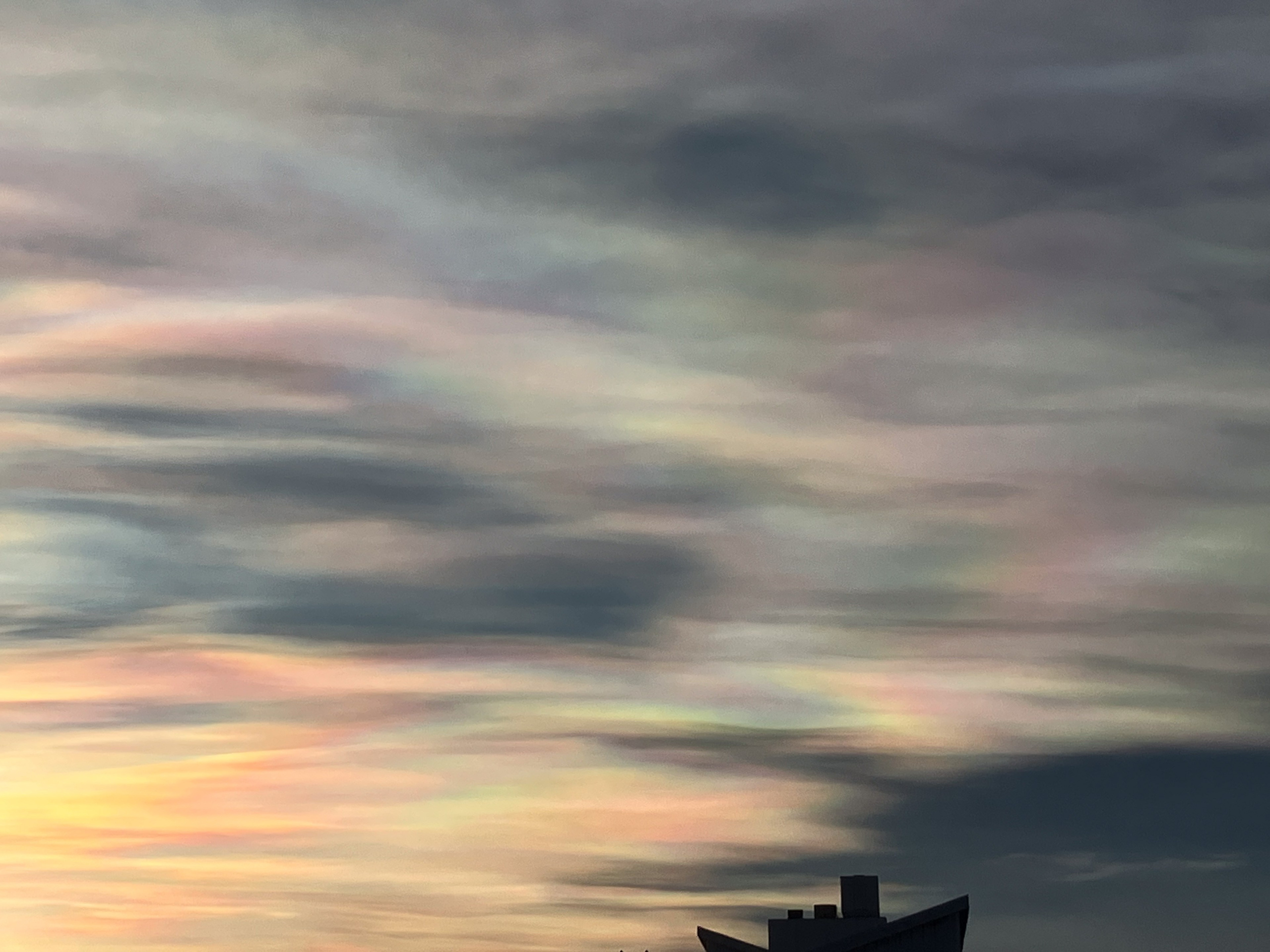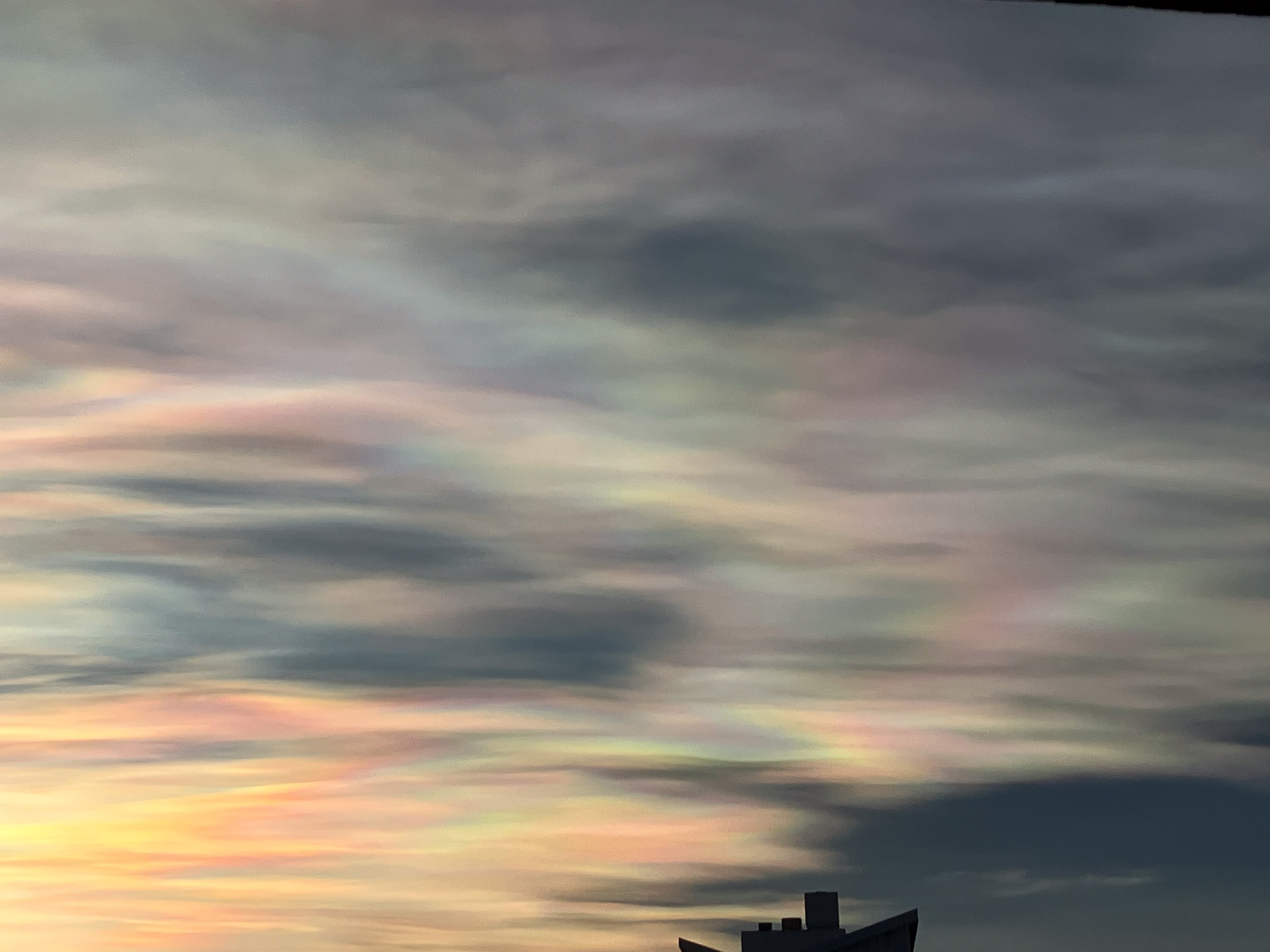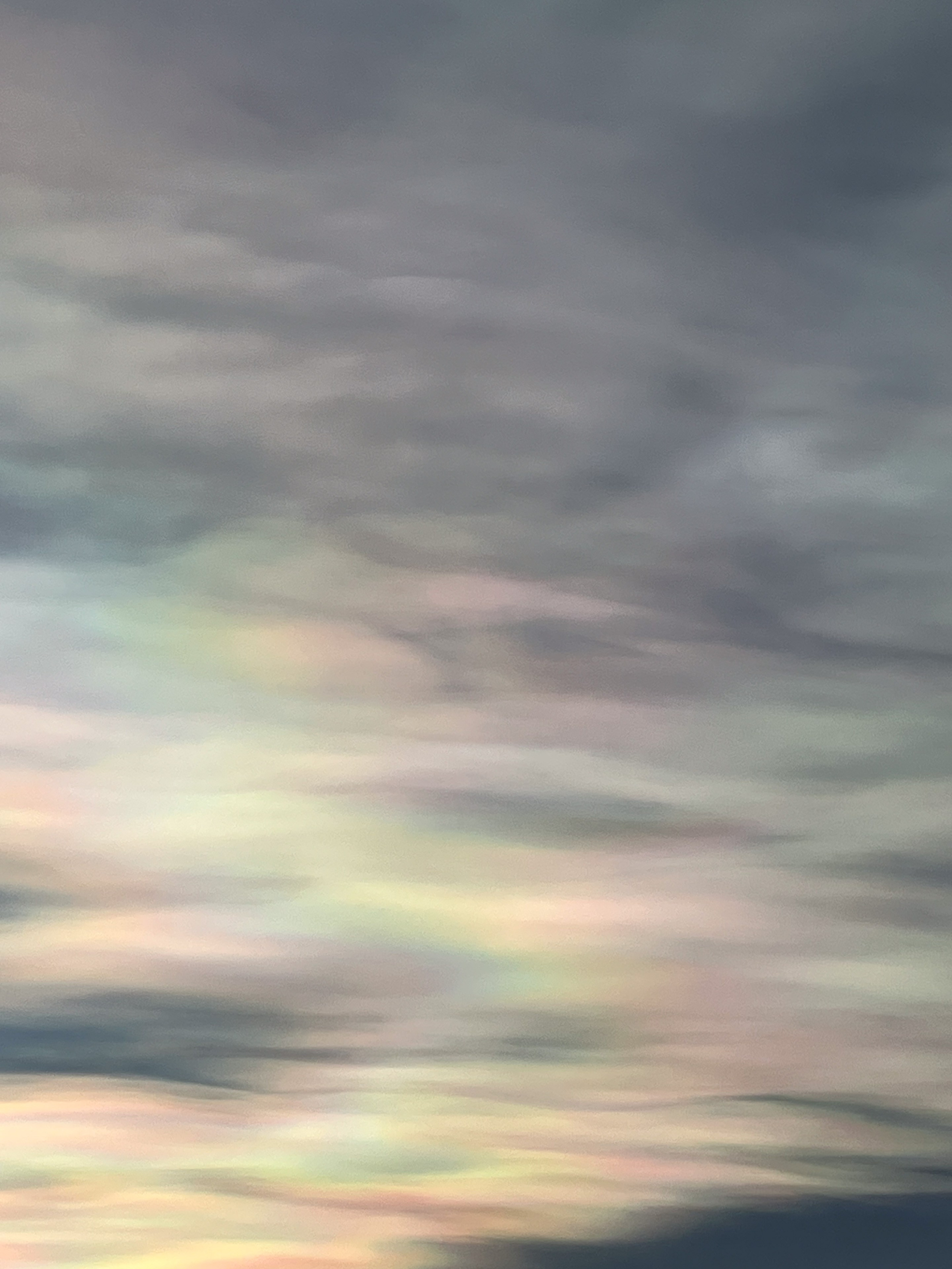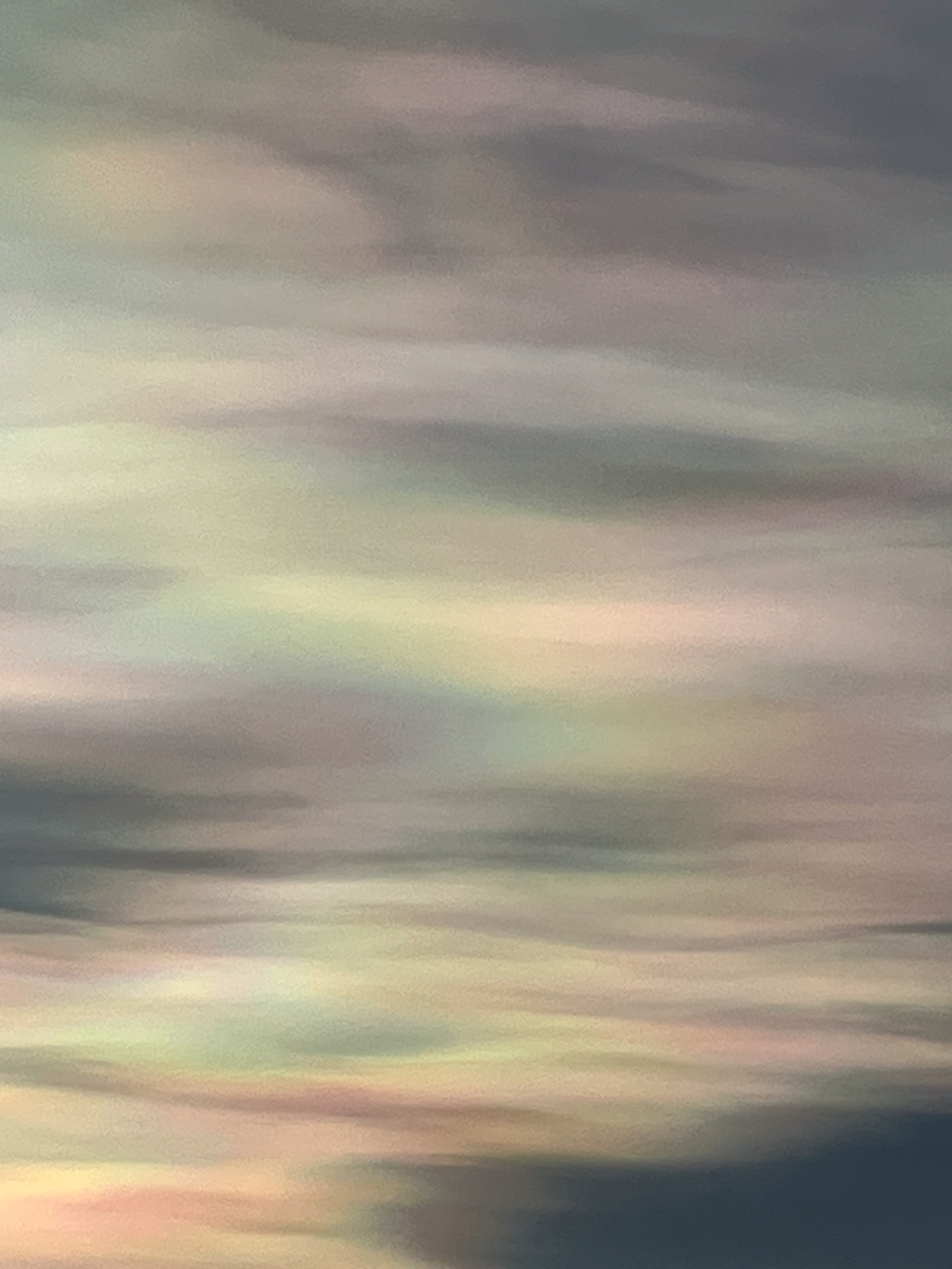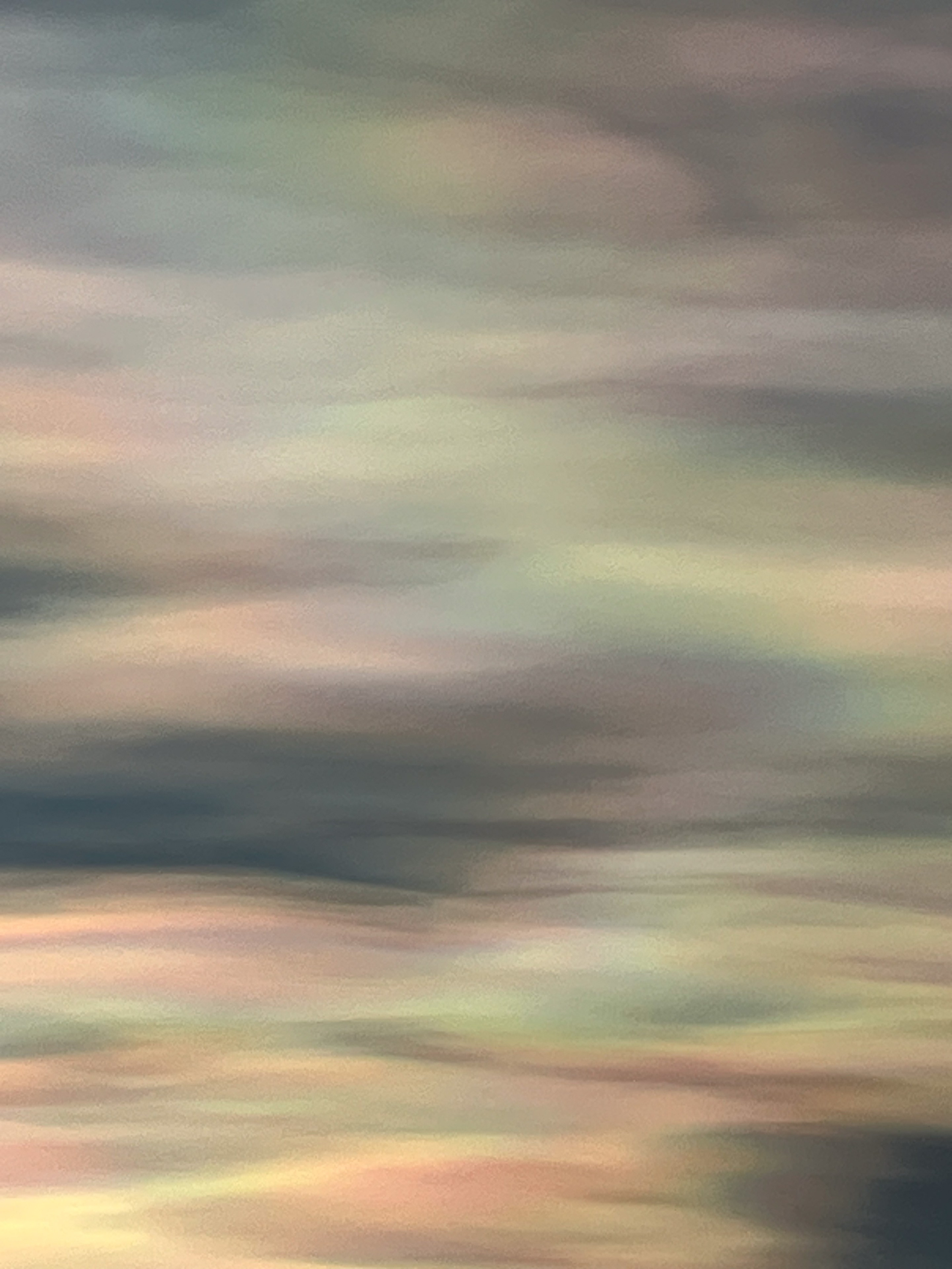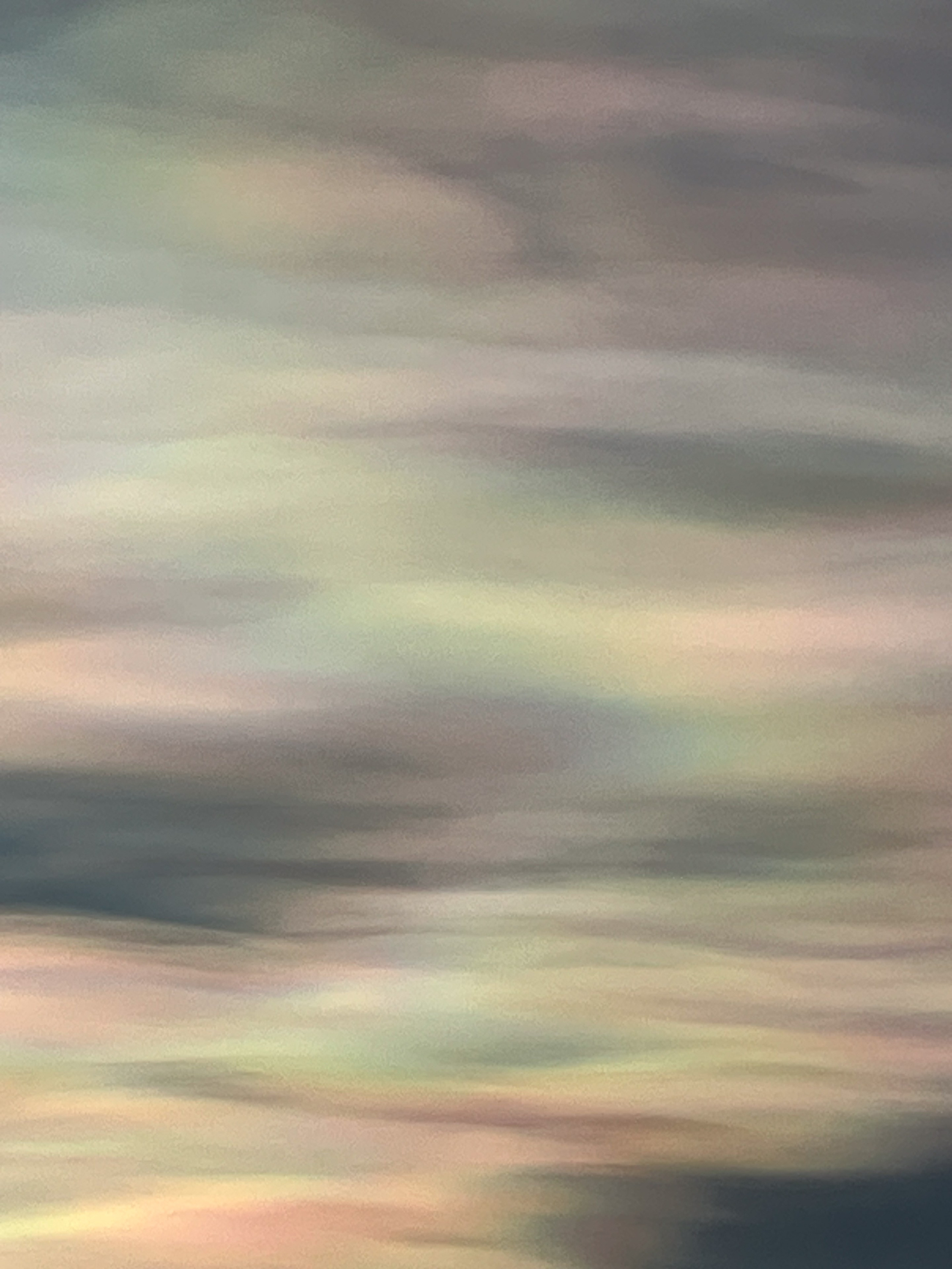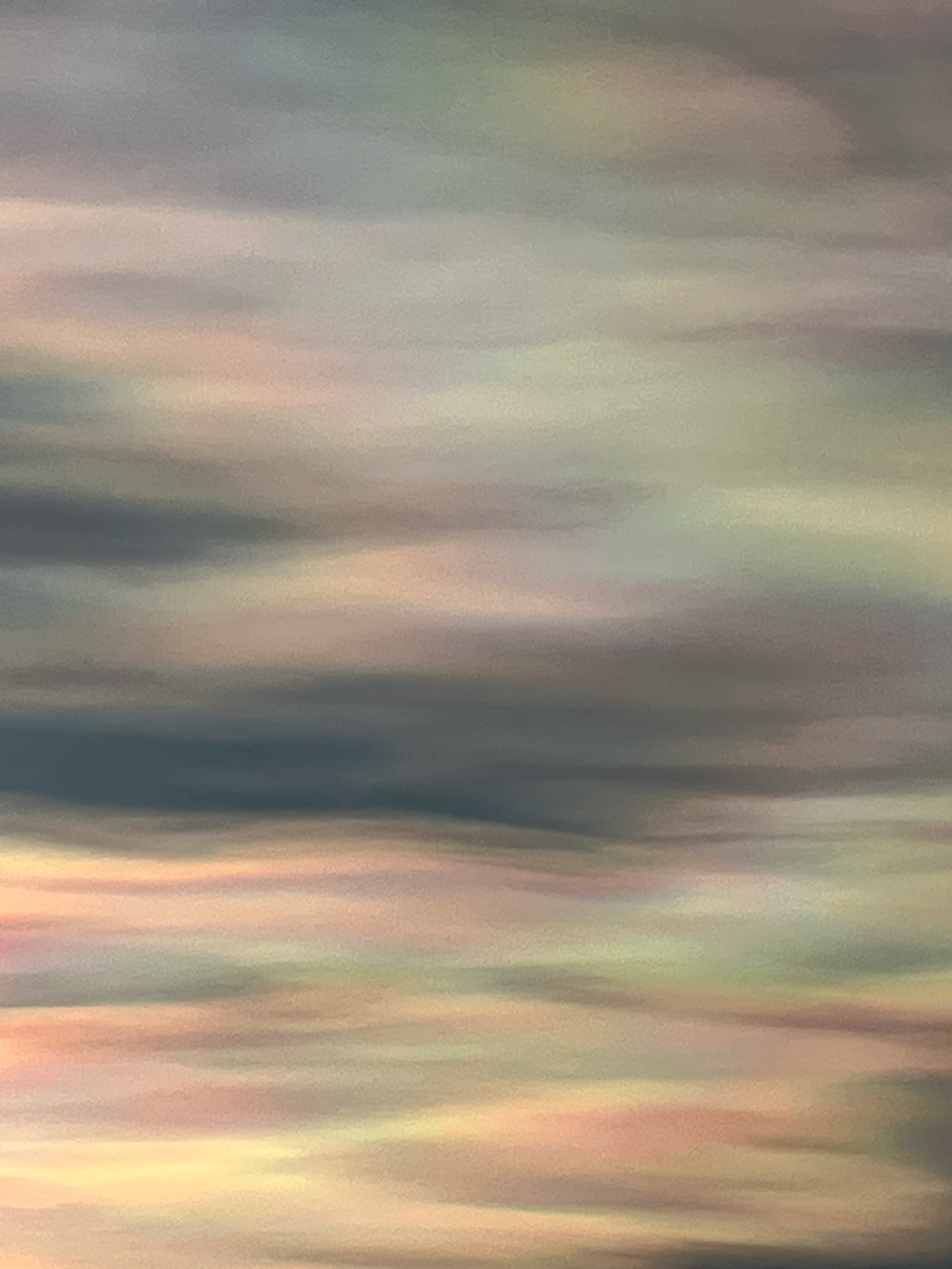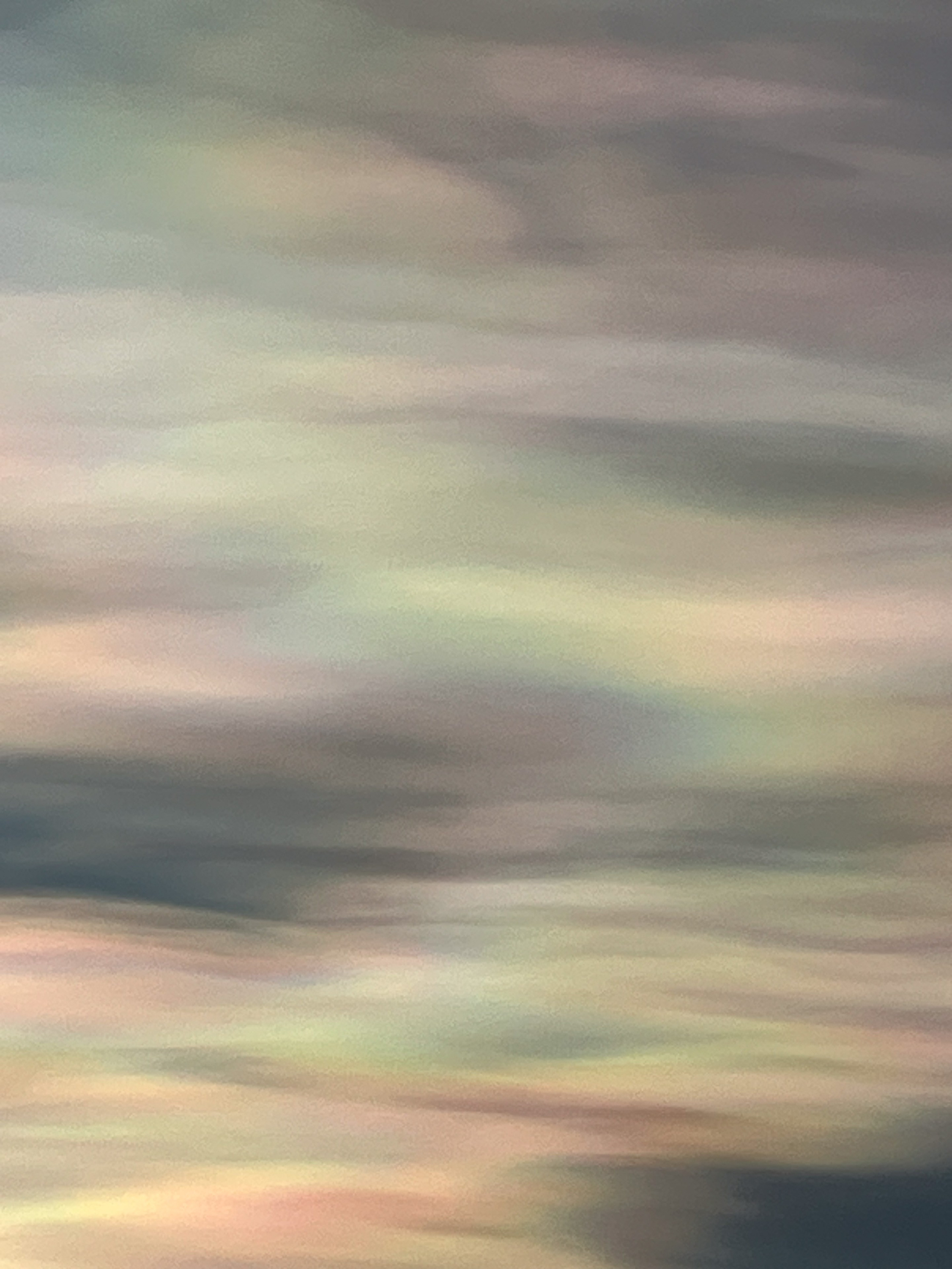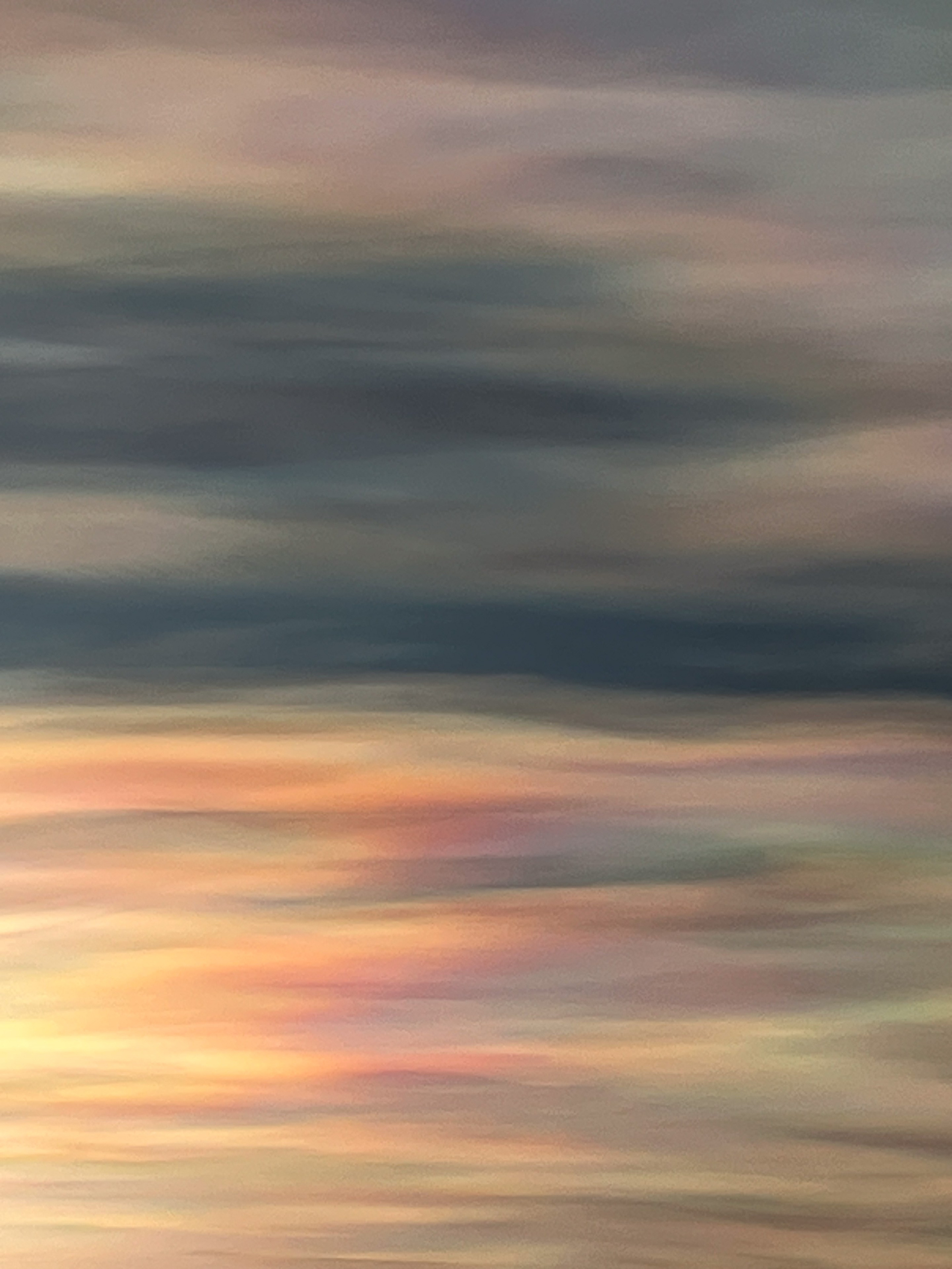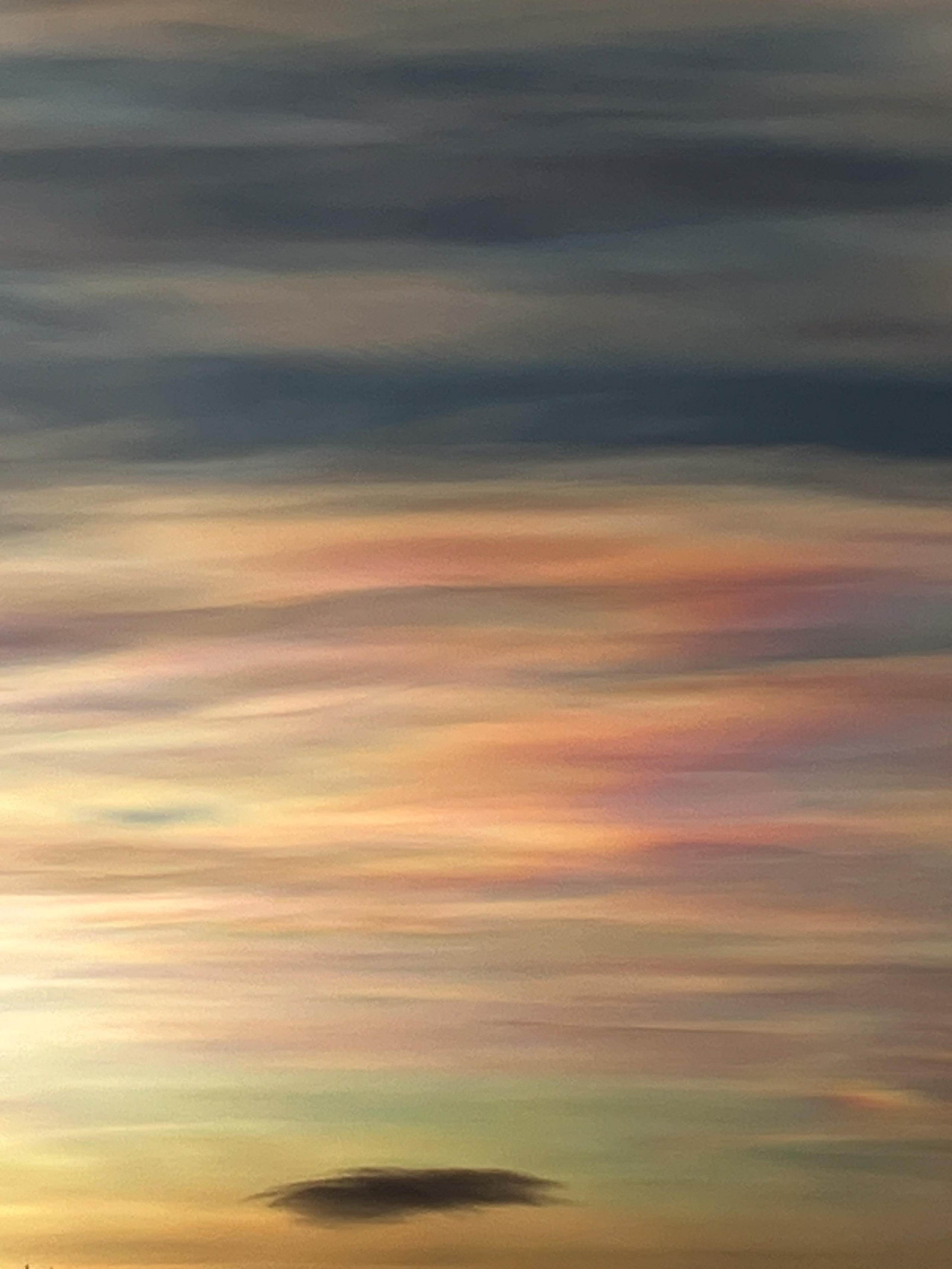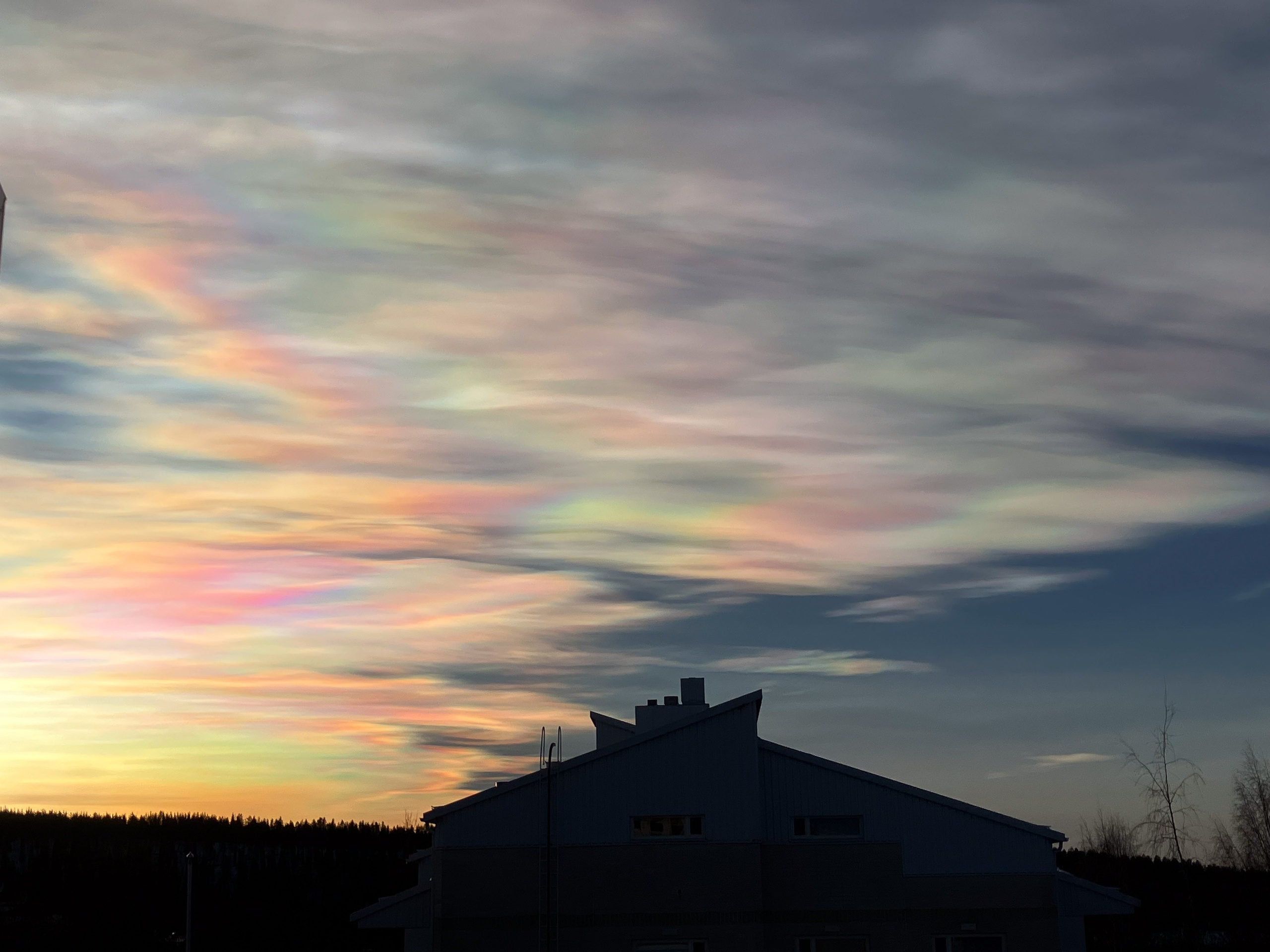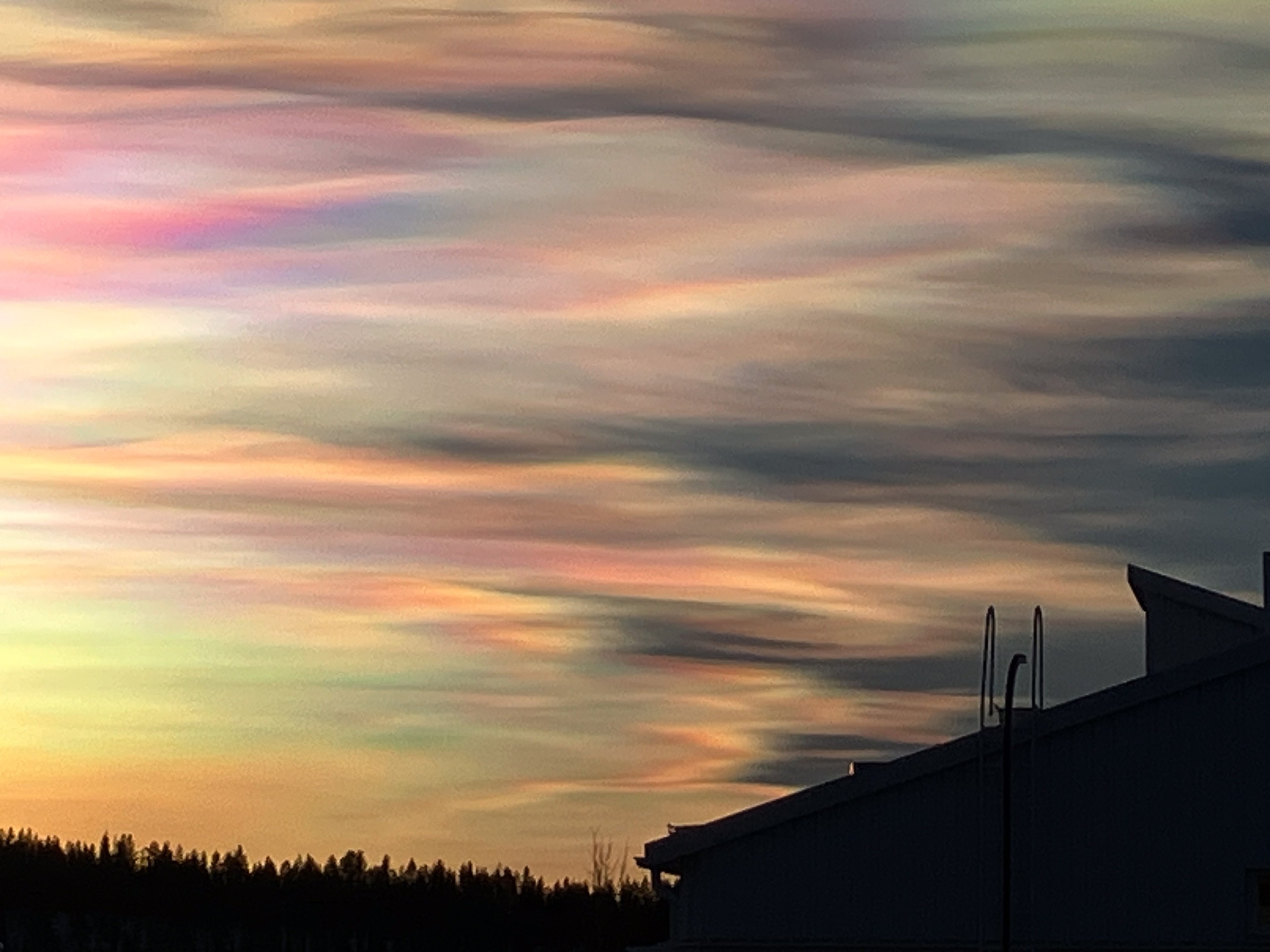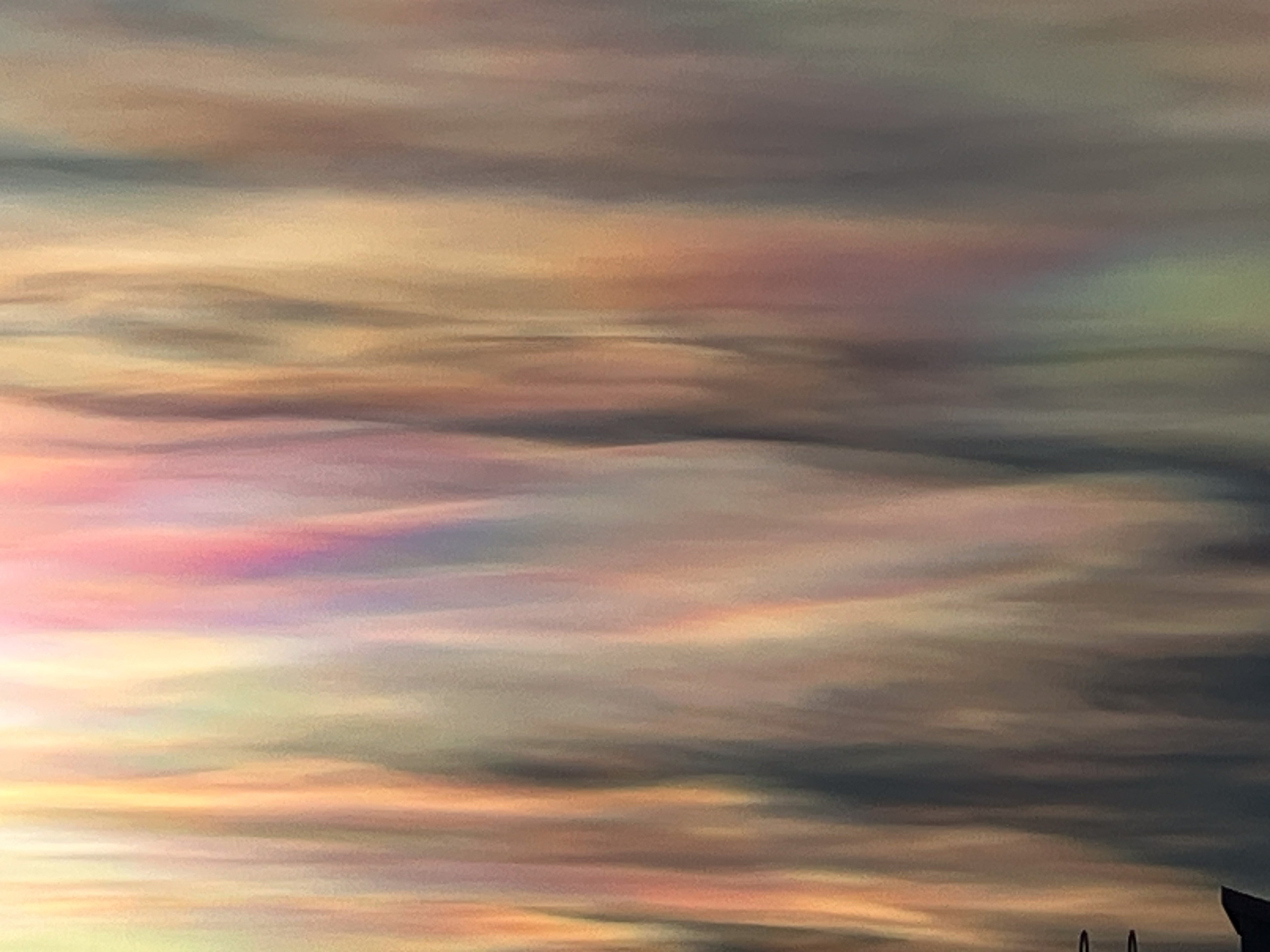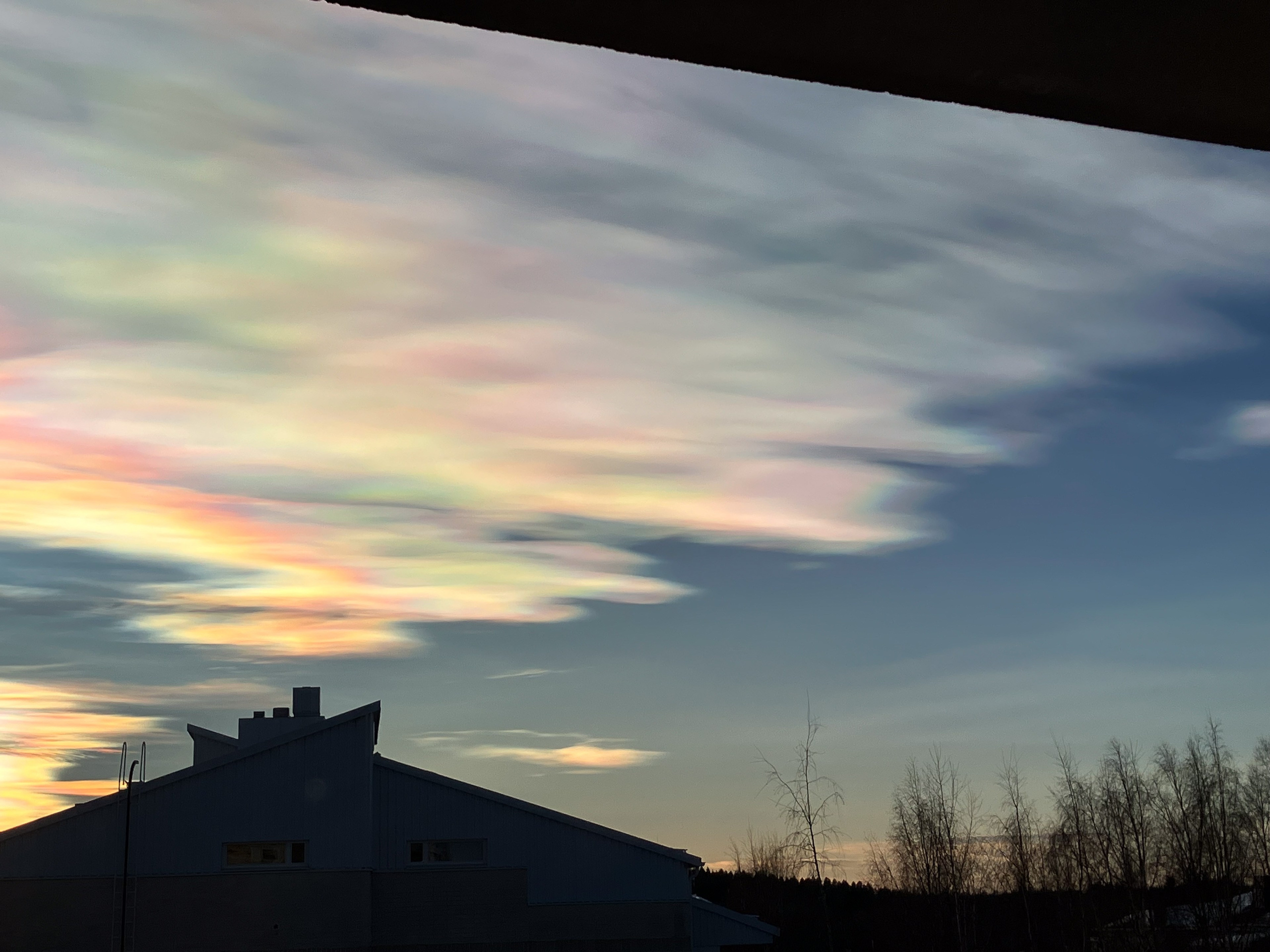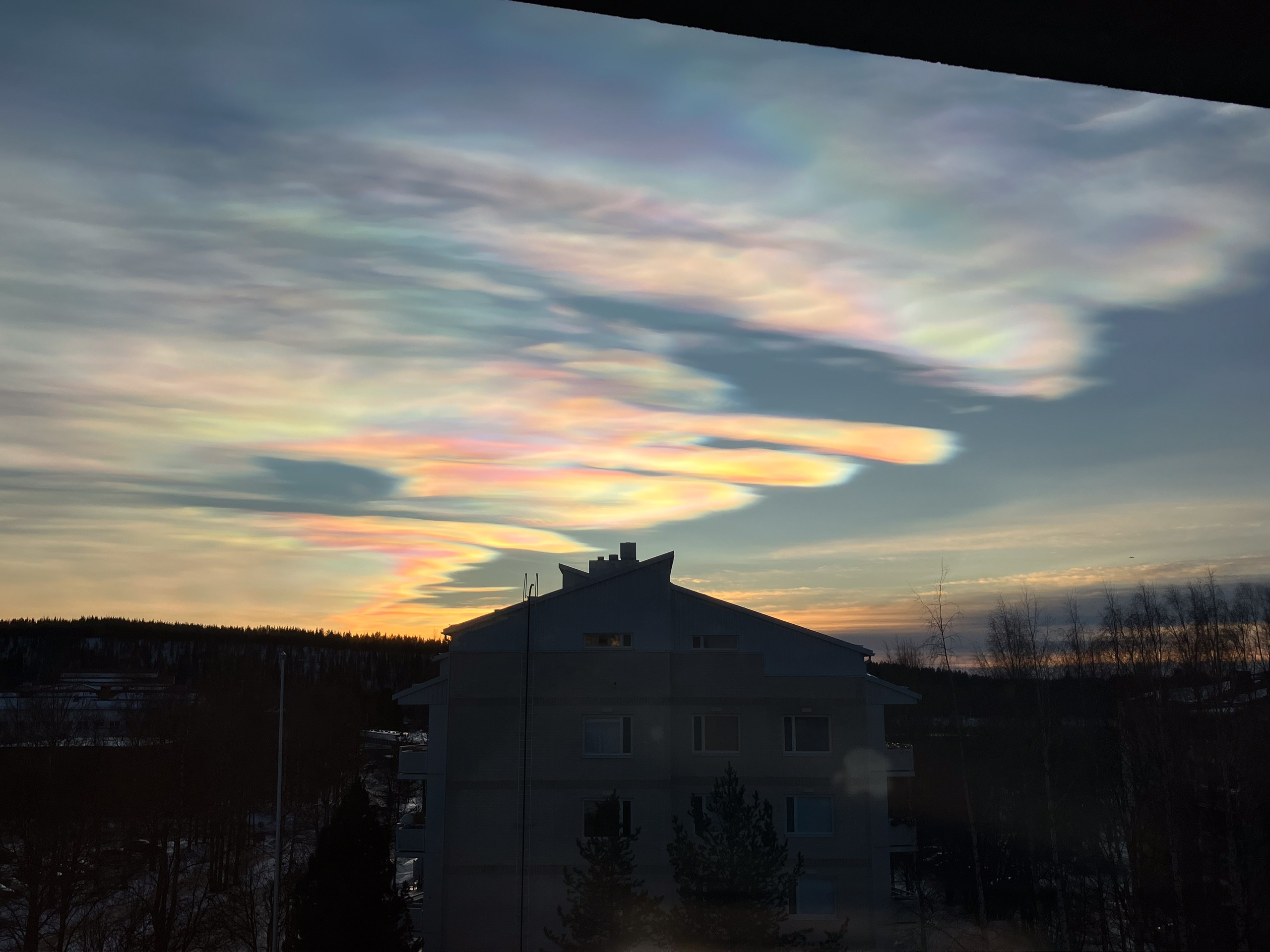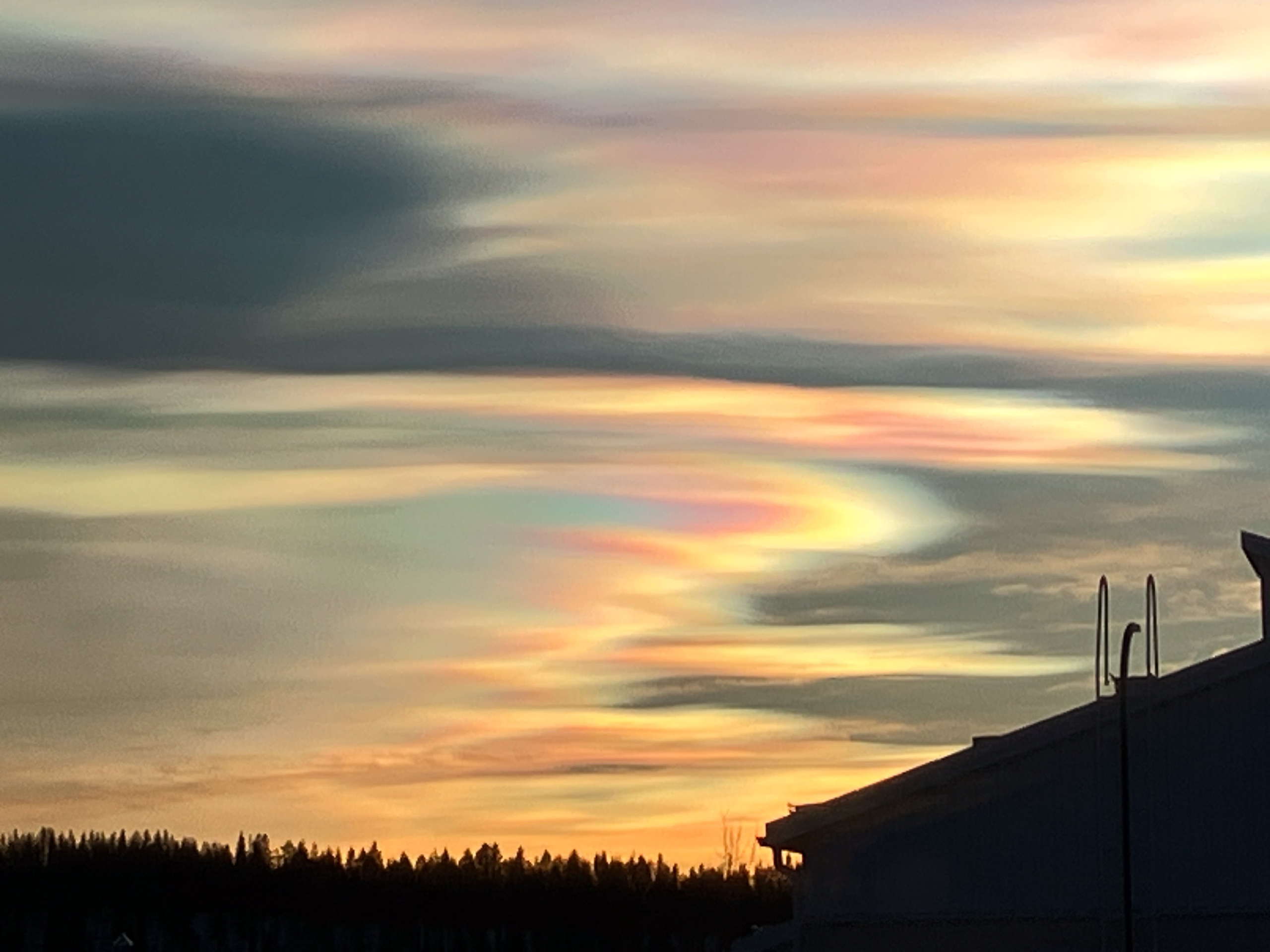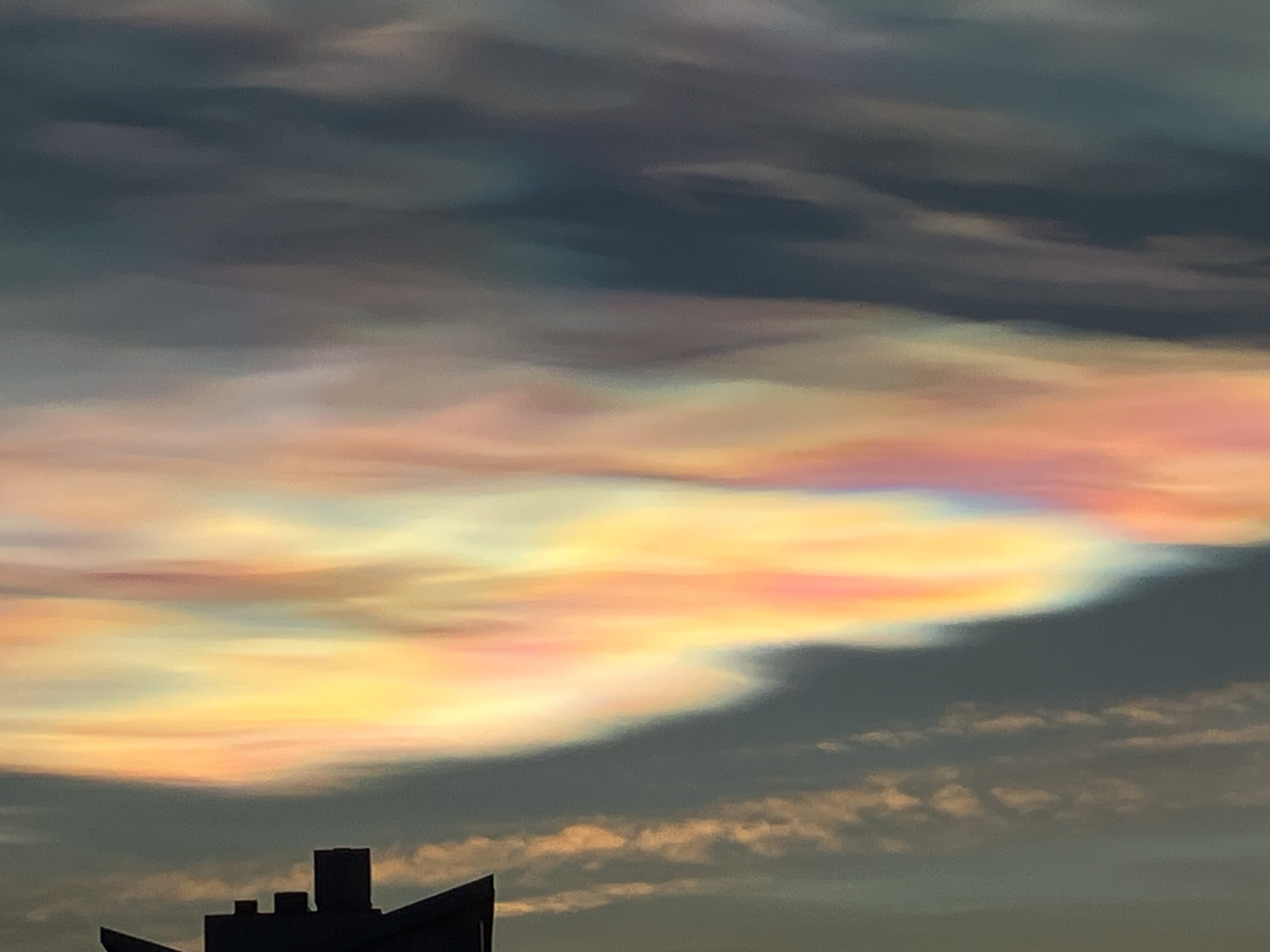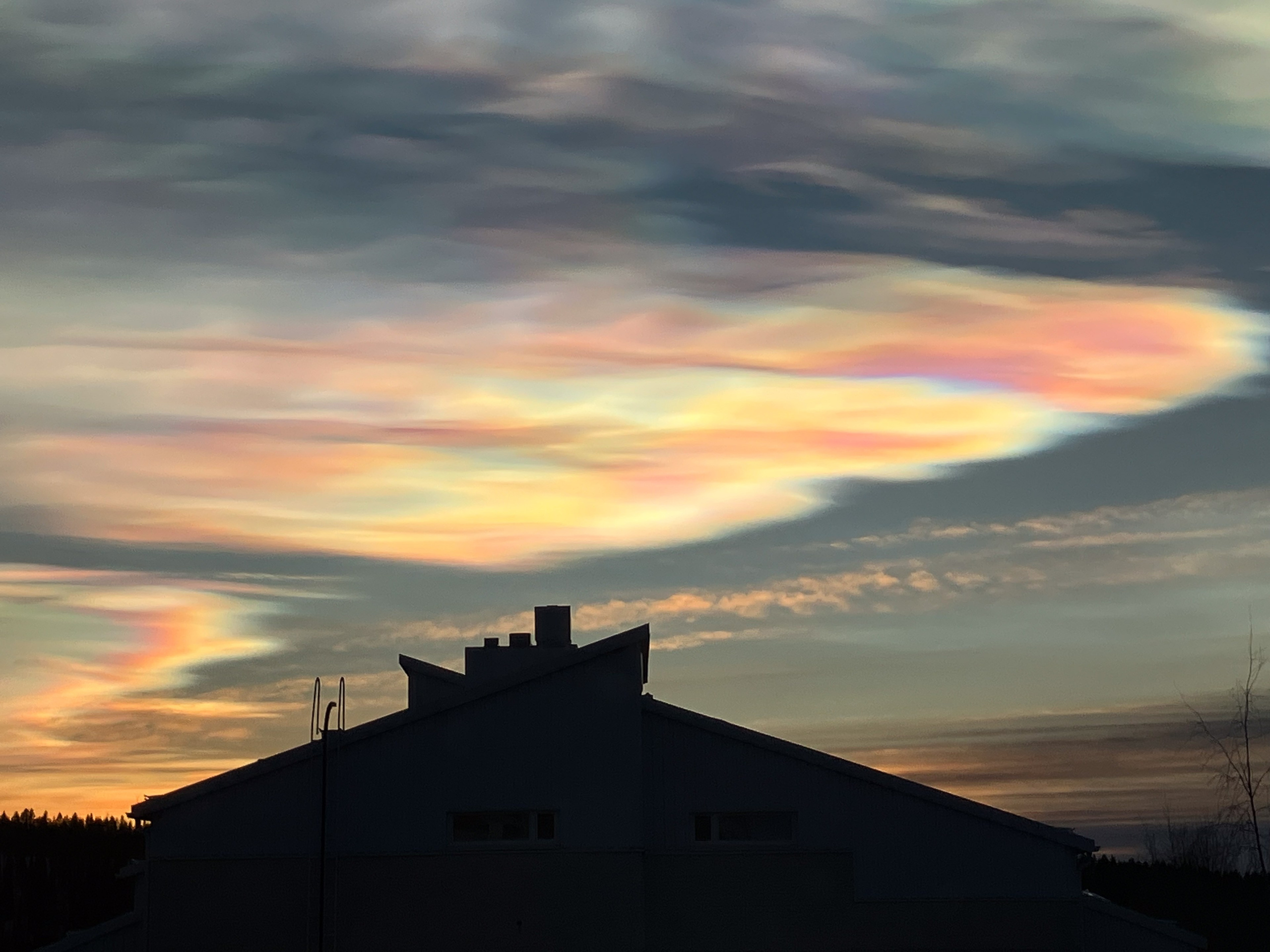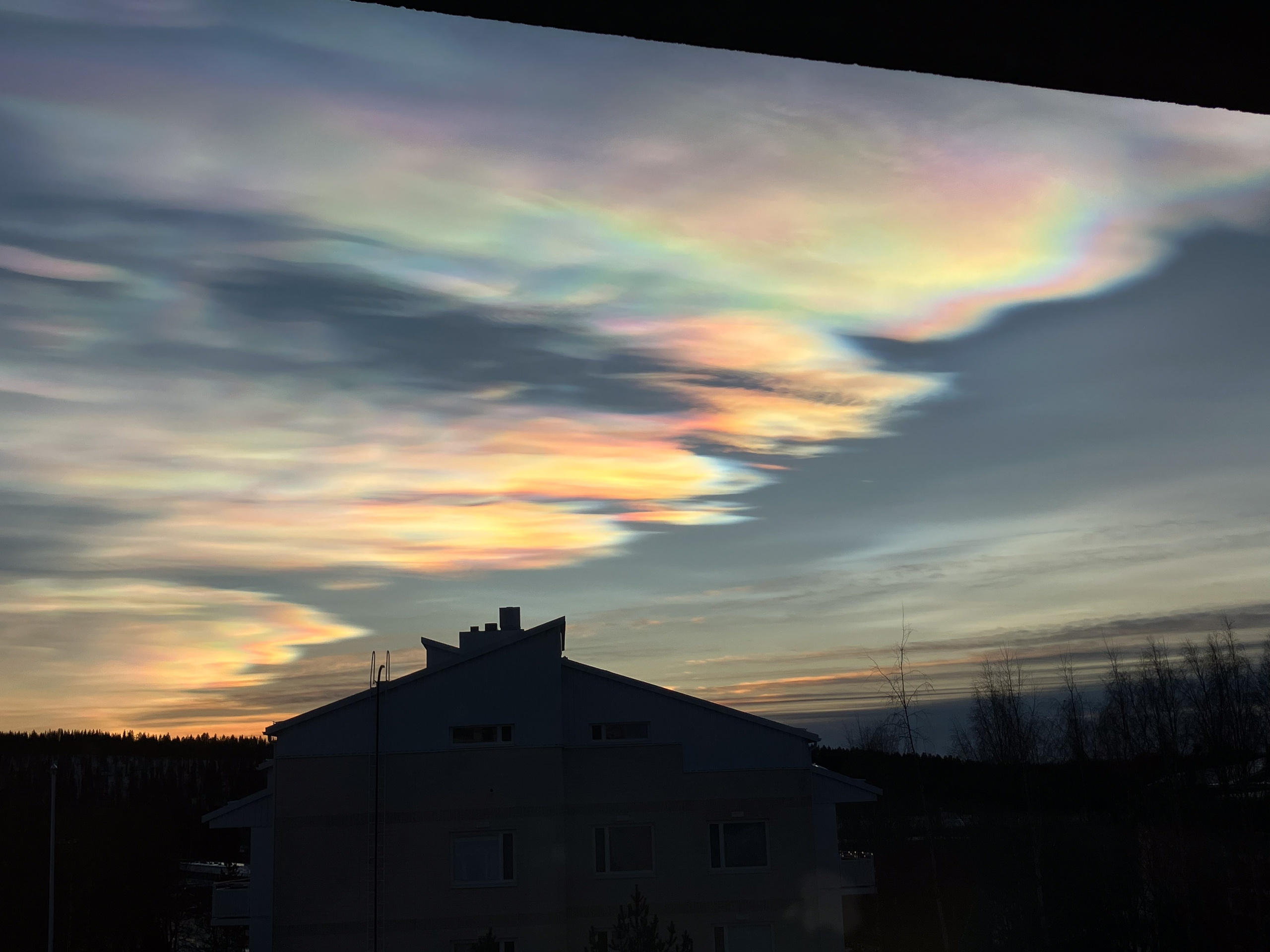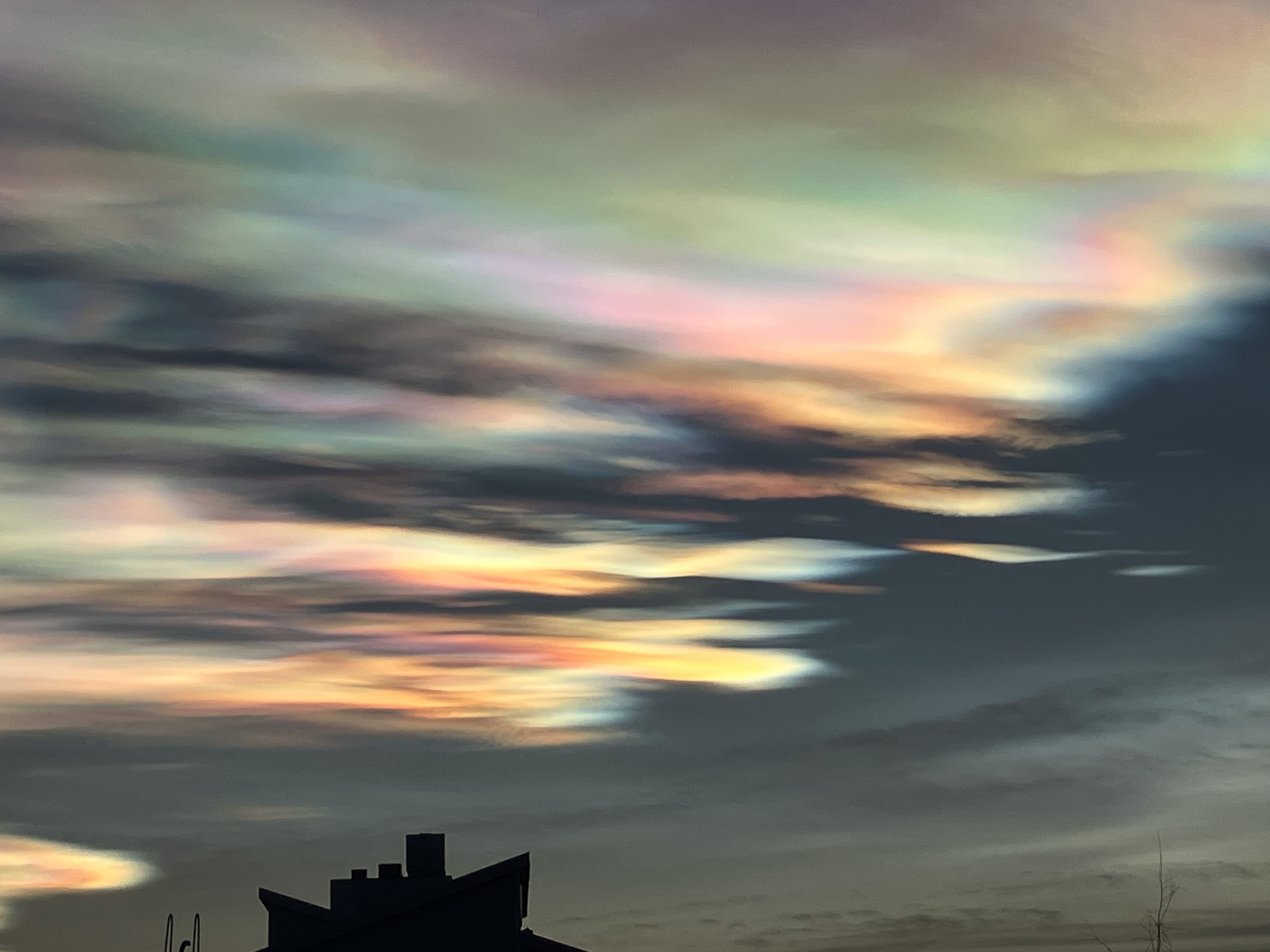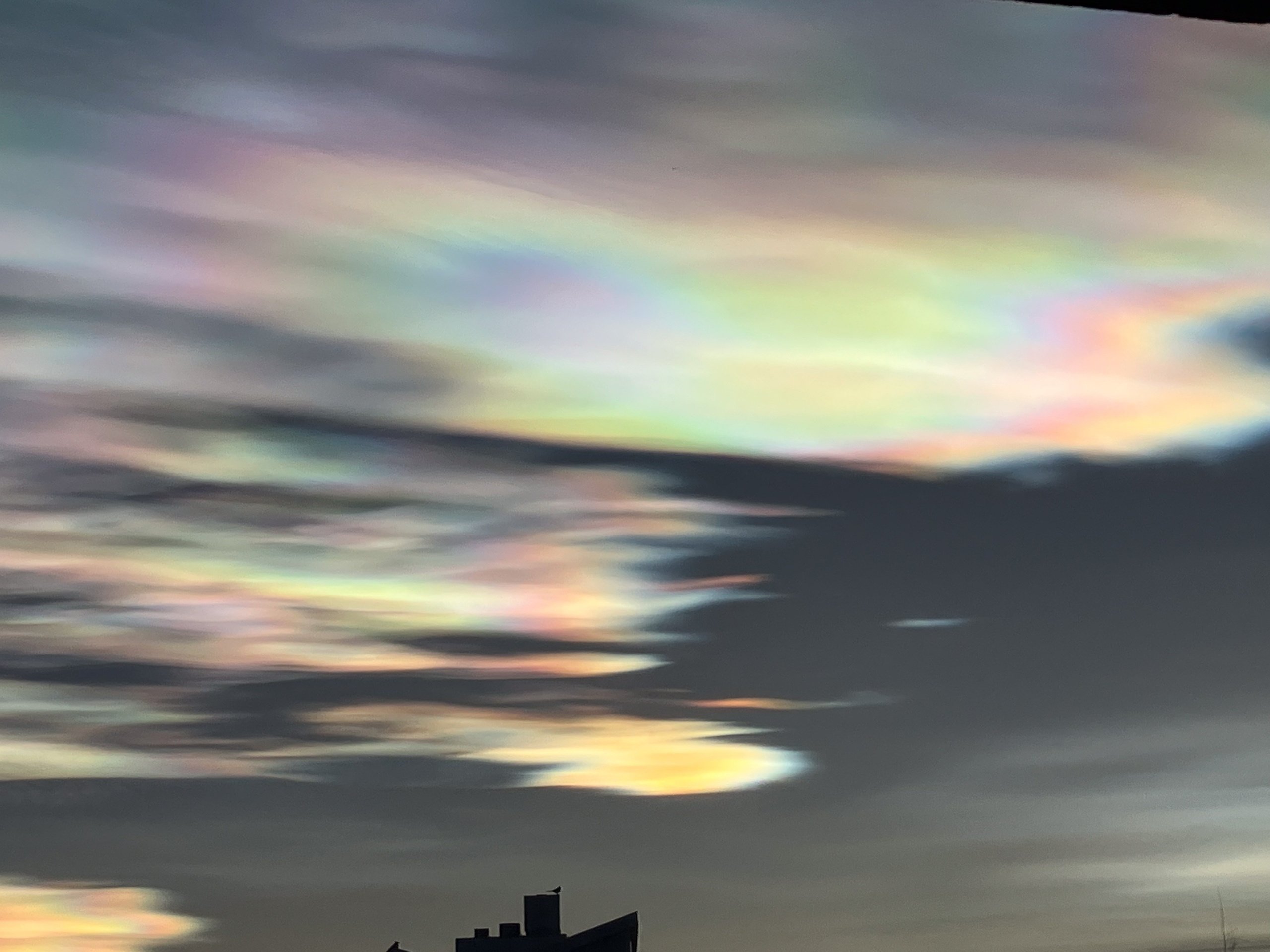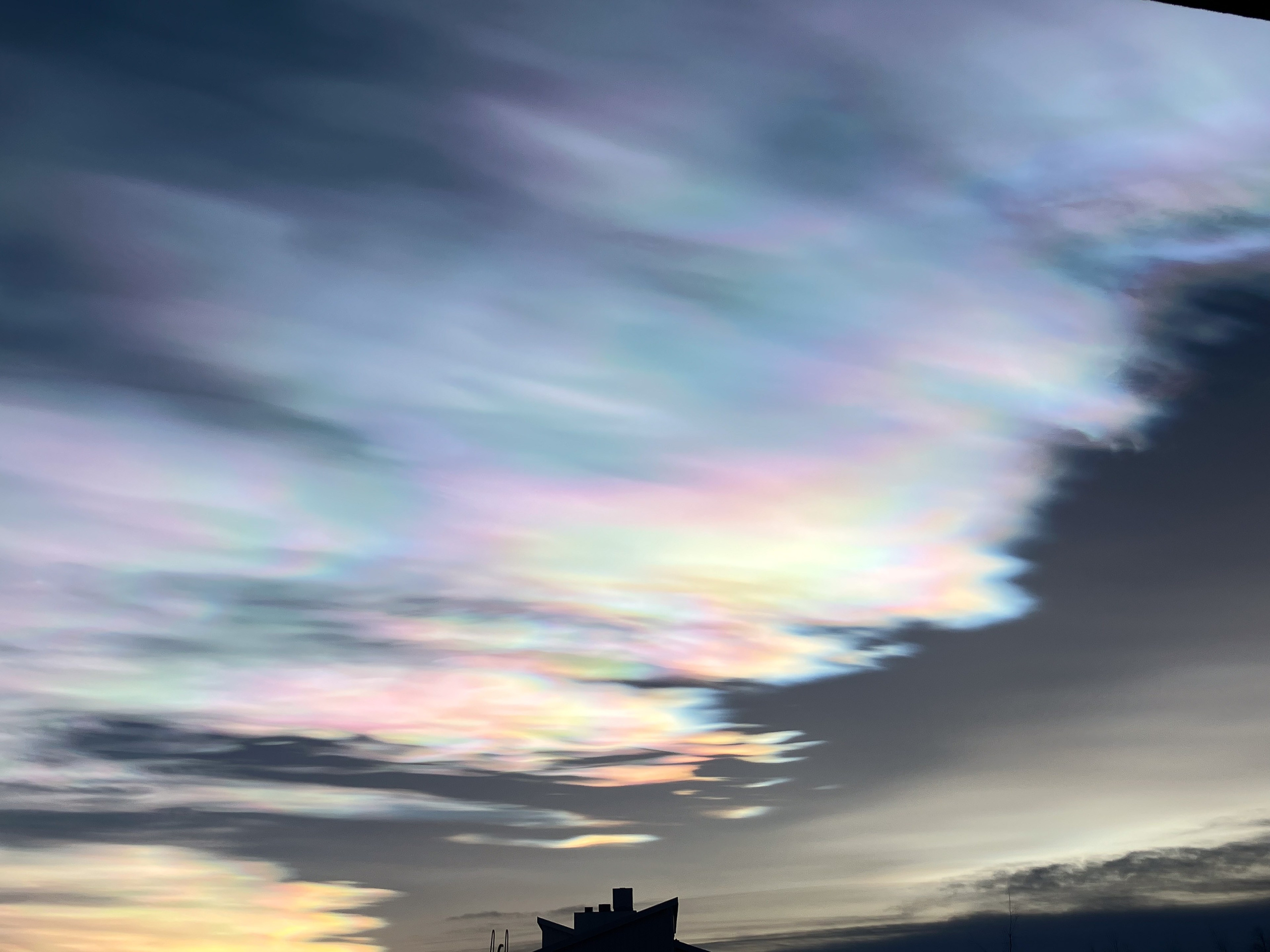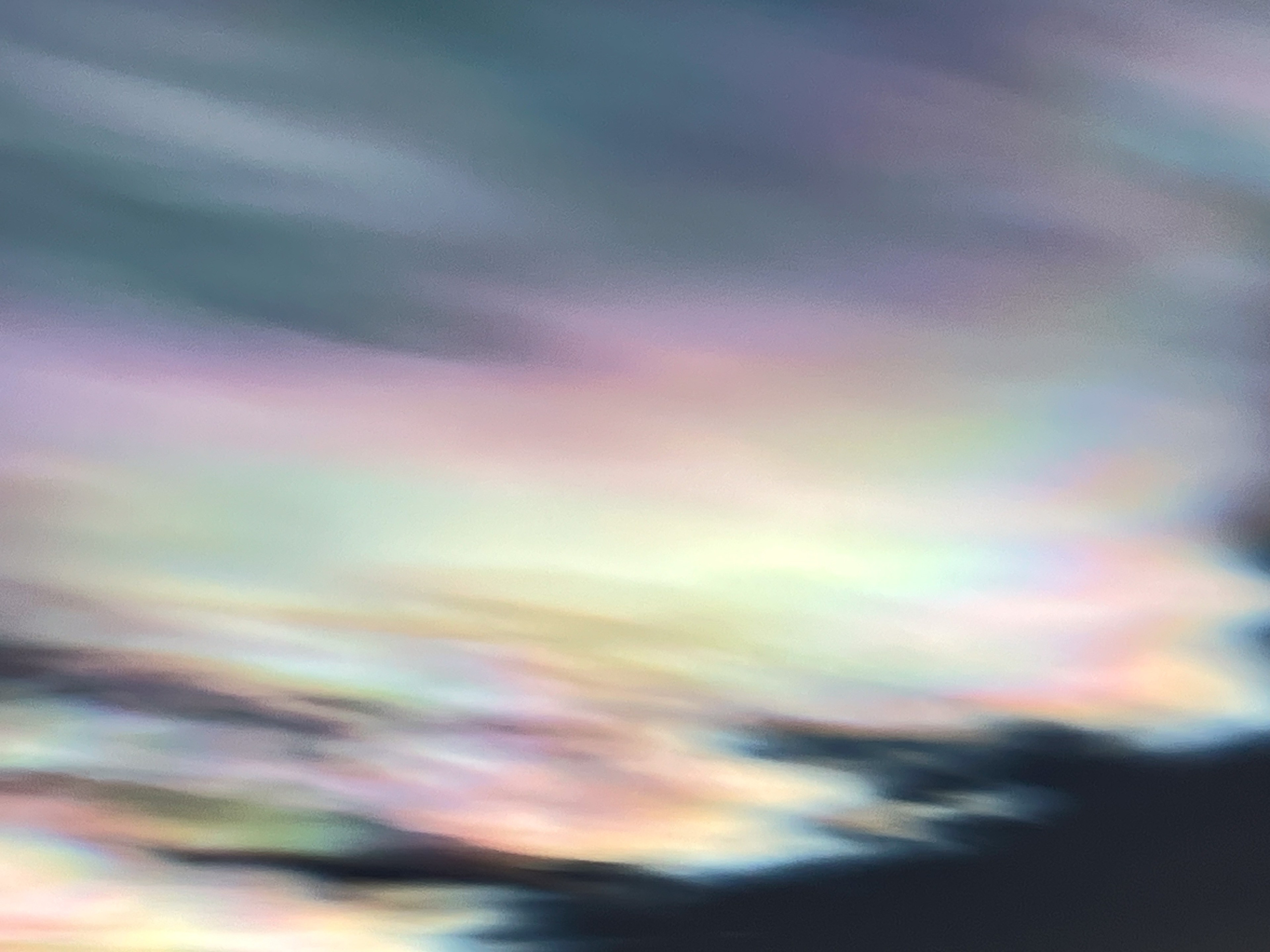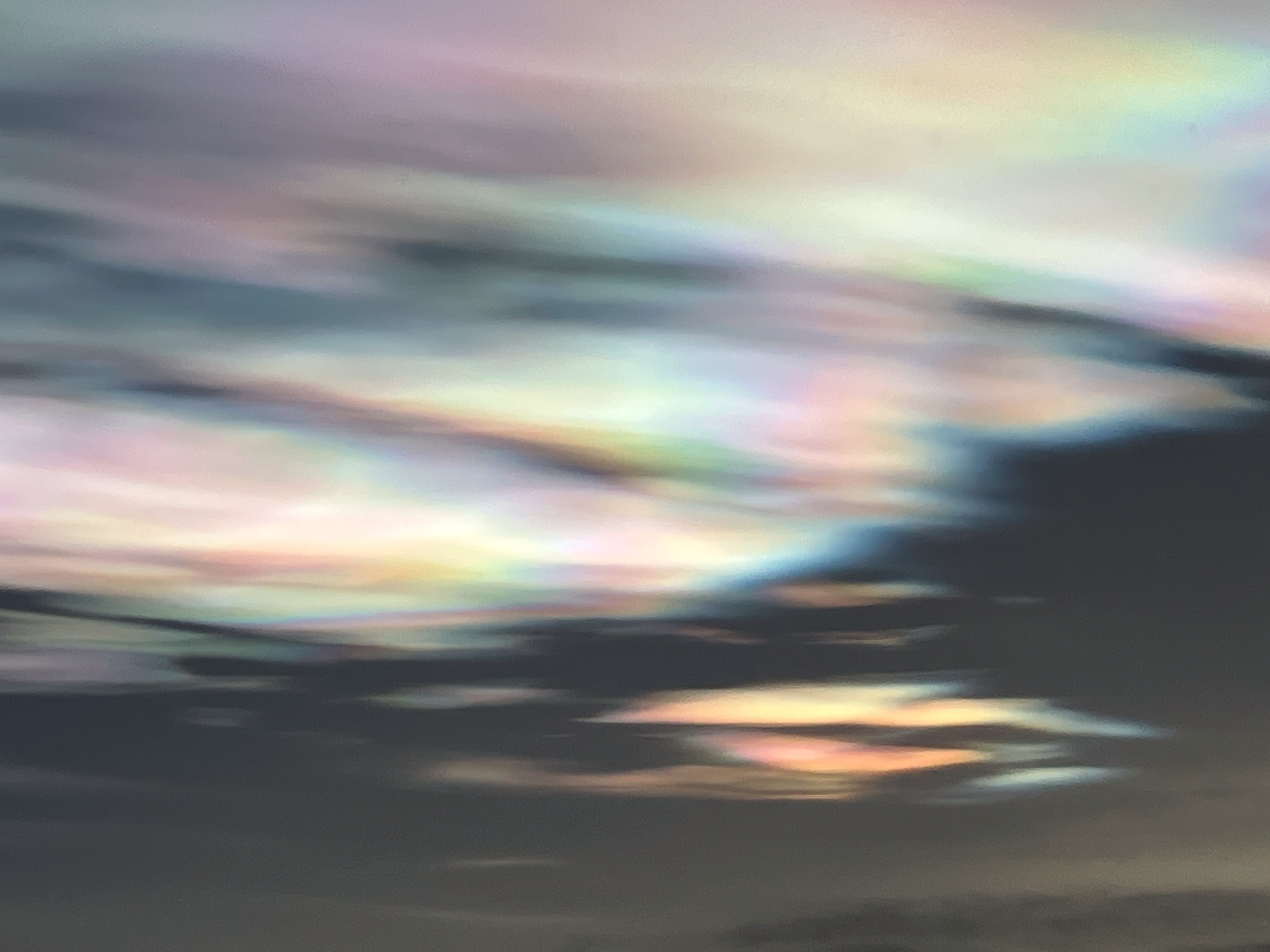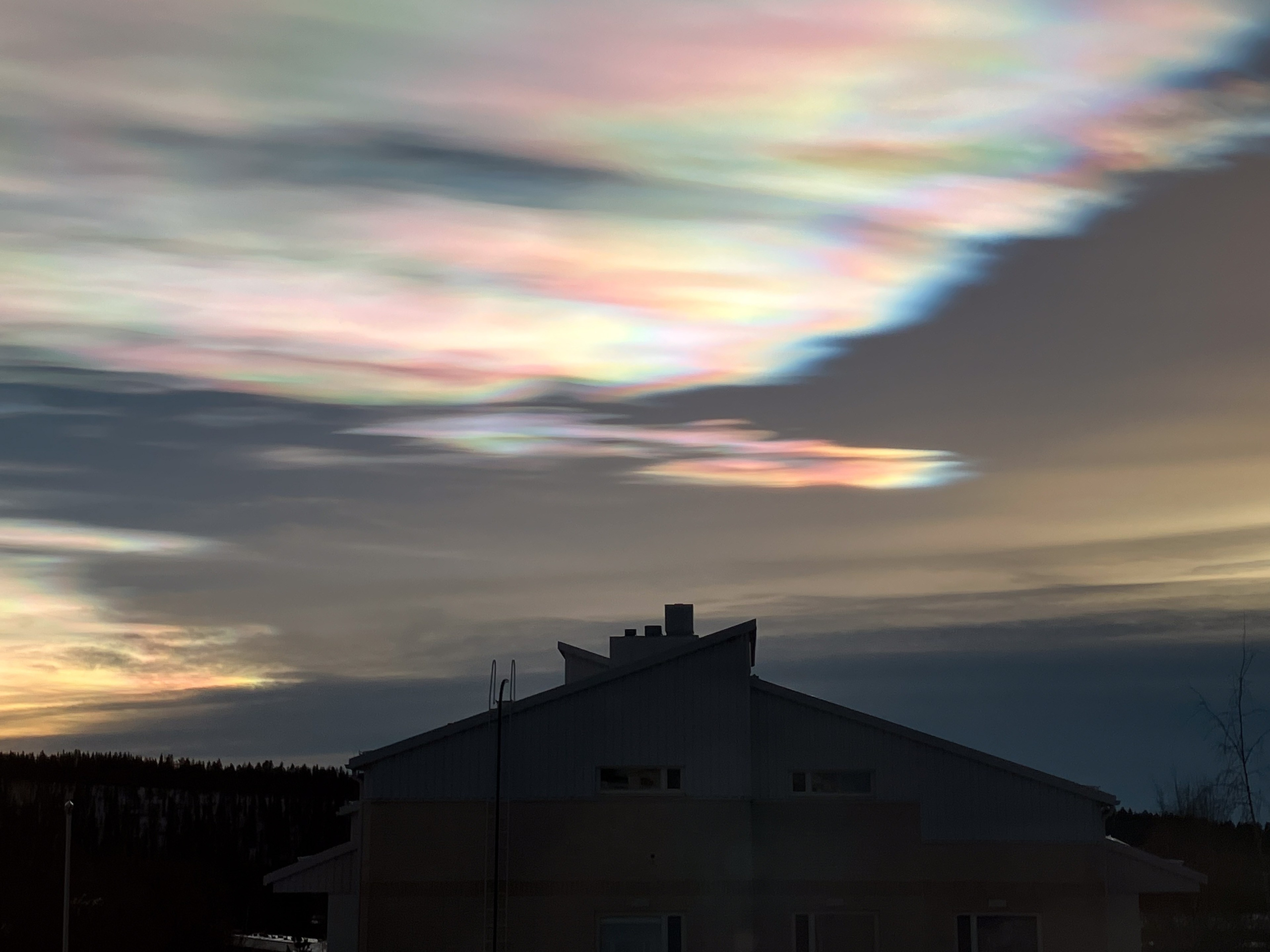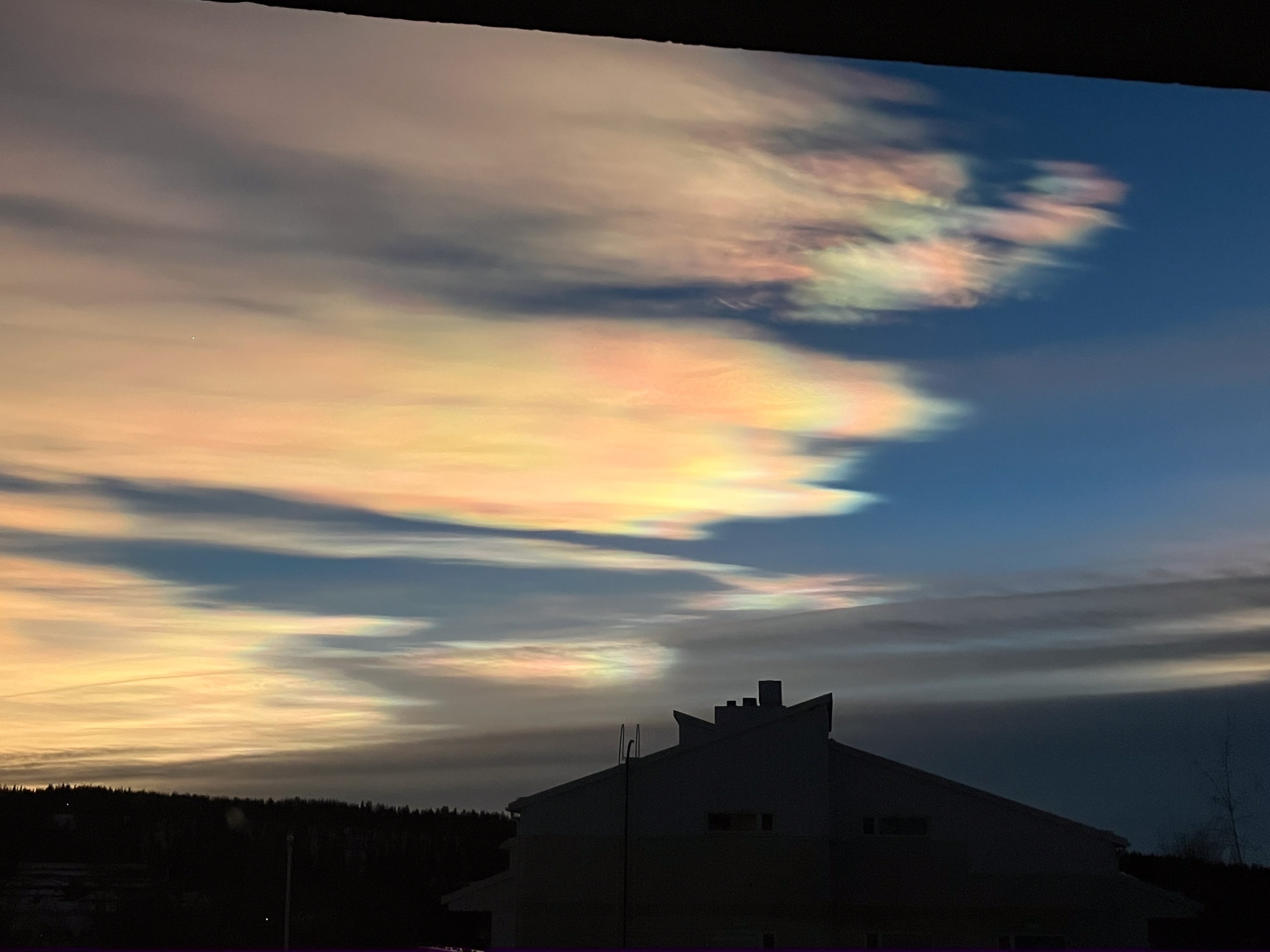Rehearsal
On the day of Epiphany Eve the nature surprised us with an exceedingly magnificent and entirely out of the ordinary phenomenon of iridescent clouds. The beaty, without any kind of exaggeration, is indeed, unimaginable. This kind of event, which does happen although not often, but still regularly, I personally witnessed maybe only a couple of times, for a short duration and at a very modest scale. This time it remained in the sky from noon till dusk and took up most of the visible area.
As I was fortunate enough to observe the complete development of the event during the day, I can’t help but share what was seen. It’s interesting that the phenomenon gave a couple of days notice about itself with a more humble — though in my understanding at that time, quite sizable — appearance at sunset.
It is apparent here that the clouds are indeed iridescent, and have the distinctive wavy structure. Yet, they only take a small part of the sky and are partly overlapped by some foreground clouds. Those, however, make it more picturesque and enhance the overall dynamic range.
Although the iridescent clouds were seen for quite a long time — from around the sunset start — I was only able to overcome my creative inertia near the end of the display when I finally got around shooting a video. Even then the finale, while not iridescent, was beautiful. Comparing the observation with what was seen three years ago makes the difference obvious.
This is what was captured on video that evening. It turned out, however it was just a rehearsal.
Performance
From the very morning the sky was looking unusual. The characteristic featherlike structure of the clouds clearly hinted that something might be in the works. However their lighting was quite unremarkable even though it had a very pretty azure-blue tone. This was going on till about noon and, while I kept looking in the window ever more often, I wasn’t taking any pictures yet.
The performance started quite, almost imperceptible. Some cloud gained some greenish-violet tones around their edges, the colors which are rather not typical for the skies.
Here and later the pictures are from the phone. Partly because it was easier to select interesting fragments this way, and partly because the main camera soon was engaged in the video capture. Fortunately, owning to the rehearsal before, it started before the finale was imminent. With that said, the pictures here are displayed without any retouching.
Further changes in the sky proceeded at an extremely dynamic pace, albeit not immediately apparent to the naked eye. There appeared some concentric rainbow circles centered around the Sun, which on these pictures is located to the left of the frame edge. This transition only took around ten minutes.
Then in another 15-20 minutes the whole sky was covered in a featherly rainbow whose colors kept gaining intensity.
As can bee seen on the final frames of the previous group, the rainbow colors reached quite a plasma-like look. Peculiarly, in this case the picture do not enhance but rather subdue the impression. The brightness of the colors in the sky and subtlety of the tonal transitions, predictably, went far outside of the reach of the capabilities of devices. Nevertheless, within the bounds of technical limits these pictures, in my view, veraciously reproduce what was happening.
As on the one hand the overview was quite overwhelming, but on the other — in the wider frame it was difficult to comprehend the details of colors interplay, I took it to capture fragments of the sky with some zoom.
The patterns started transforming into interesting color abstractions. It is peculiar that even though a frame seemingly contains all possible rainbow colors, their overall combination looks extremely harmonious. The most remarkable frames are presented here as a separate group:
I’d think for a human artist it would be rather difficult, if at all possible to paint a picture like this, more so as the beauty started taking a completely fantastical scale.
On the second frame in this group it is readily apparent how the phone desperately but with little success tries to capture the complete color range. It was about an hour since the beginning of the performance.
Then happened a vast transformation of the scene. Plasmic interplays all over the sky were replaced by a cloud front directed at the west, which consisted of rainbow flares burning with plasma. The transition took about an hour and a half.
And then something completely unexplainable started to happen. I will put some explanations about the nature of these clouds below, and now will only point out that these clouds are high-altitude. They are located at the height of 15-25 kilometers, that is above most visible atmospheric phenomena. Regardless, behind this bright rainbow-colored formation there appeared a deep dark-gray background.
That it was not just the color of the evening sky is visible on the last and the previous to the last frames below — in the bottom right corner there is an opening where a true light-blue fragment of the sky can be seen. The process of the gray background formation was almost explicit, yet its emergence behind the clouds is a mystery to me. I can only say one thing — the phenomena which was already quite fantastic, thanks to the contrast background, gained, it seemed, the ultimate brightness and became truly indescribably phenomenal!
The intensity of the background kept gaining, and the rainbow flames reached the decisive resolution.
Finally, about four hours after noon, that is, a lot later than the sunset, the colors moved to a warmer part of the range while keeping the rainbow-like look. An approaching cloud front started blocking the lower edge of the iridescent clouds, but they kept shining beautifully through the grey haze.
Here is the resulting video. Unfortunately I failed to avoid some technical deficiencies, but the main parts of the performance are, as far as possible, reproduced faithfully.
So what was that?
Polar stratospheric clouds, as the Wikipedia suggests, form at the heights of 15-25 kilometers when a number of non-trivial conditions coincide. There has to be a low temperature, approximately -80°C, presence of the condensation cores in the atmosphere — a thinly dispersed aerosol, and strong winds at a certain altitude. In these conditions there form tiny ice crystals which refract the light. It is simultaneously similar to a regular rainbow where the light is refracted in the small water droplets, and to the pillars of light, which represent a reflection (although not a refraction) of light in small ice leafs floating in the air. At this kind of altitude clouds don’t usually form because it is too dry there. However, at a reduced temperature the rarely spread molecules of water start combining in small ice particles, which then form the clouds.
In this particular occurrence the iridescent clouds formation turned out to be affected by the range of the Scandinavian Mountains located to the west, at the shores of Norway. A stream of a strong westerly wind from the Atlantics meeting the mountainous obstacle was deflected up like from a trampoline. Reaching the lower stratosphere it formed areas of reduced temperature there, and imparted the characteristic wavy shape to the clouds.
The Sun, this time of year not departing far from the horizon, during the whole day provided the necessary angle of incidence of light before and after the sunset.
Finally, clear weather in the lower layers of the atmosphere ensured the light rays from the Sun could penetrate both to the clouds, and back to the observer, that is, us. So it goes.







